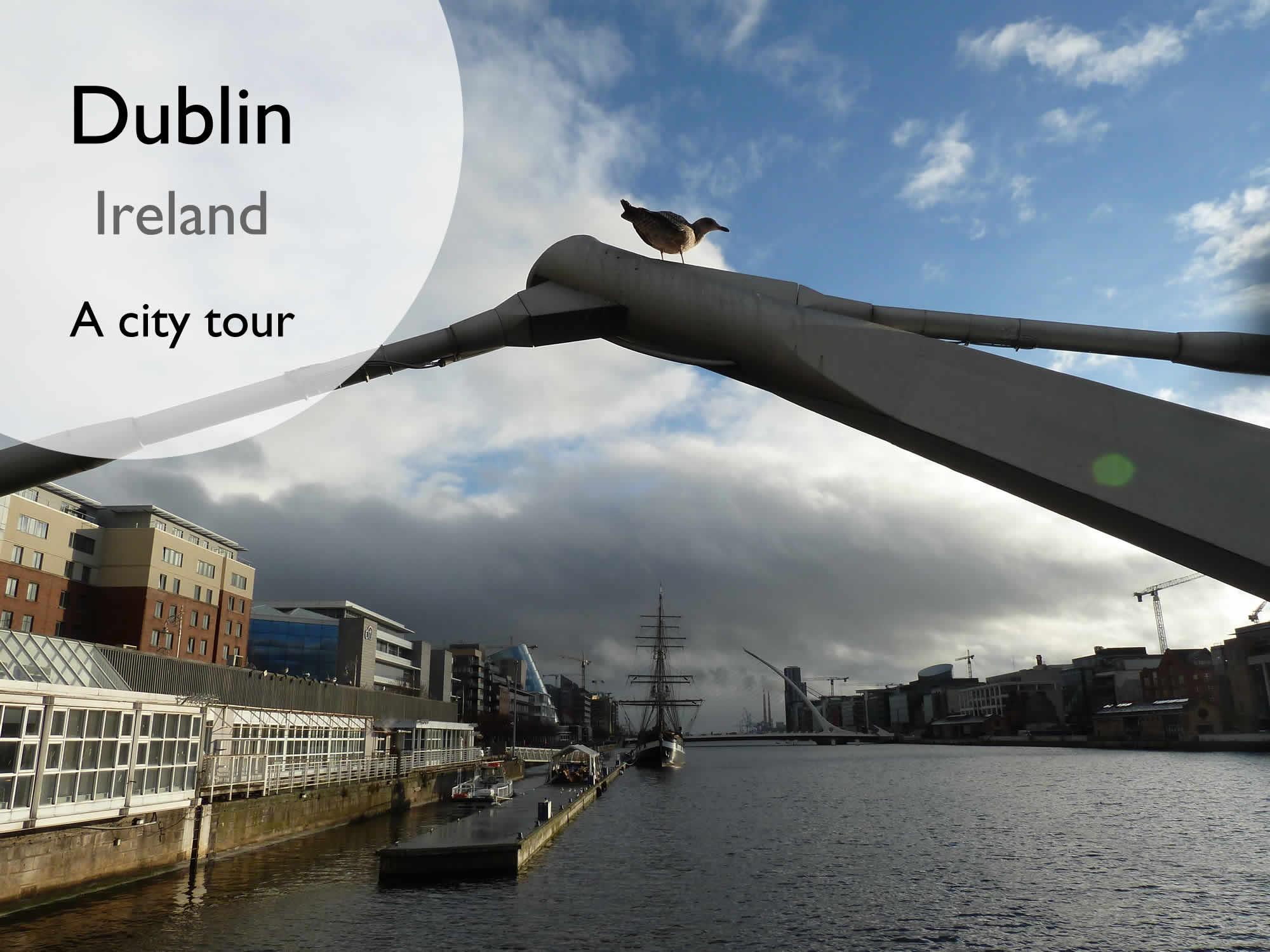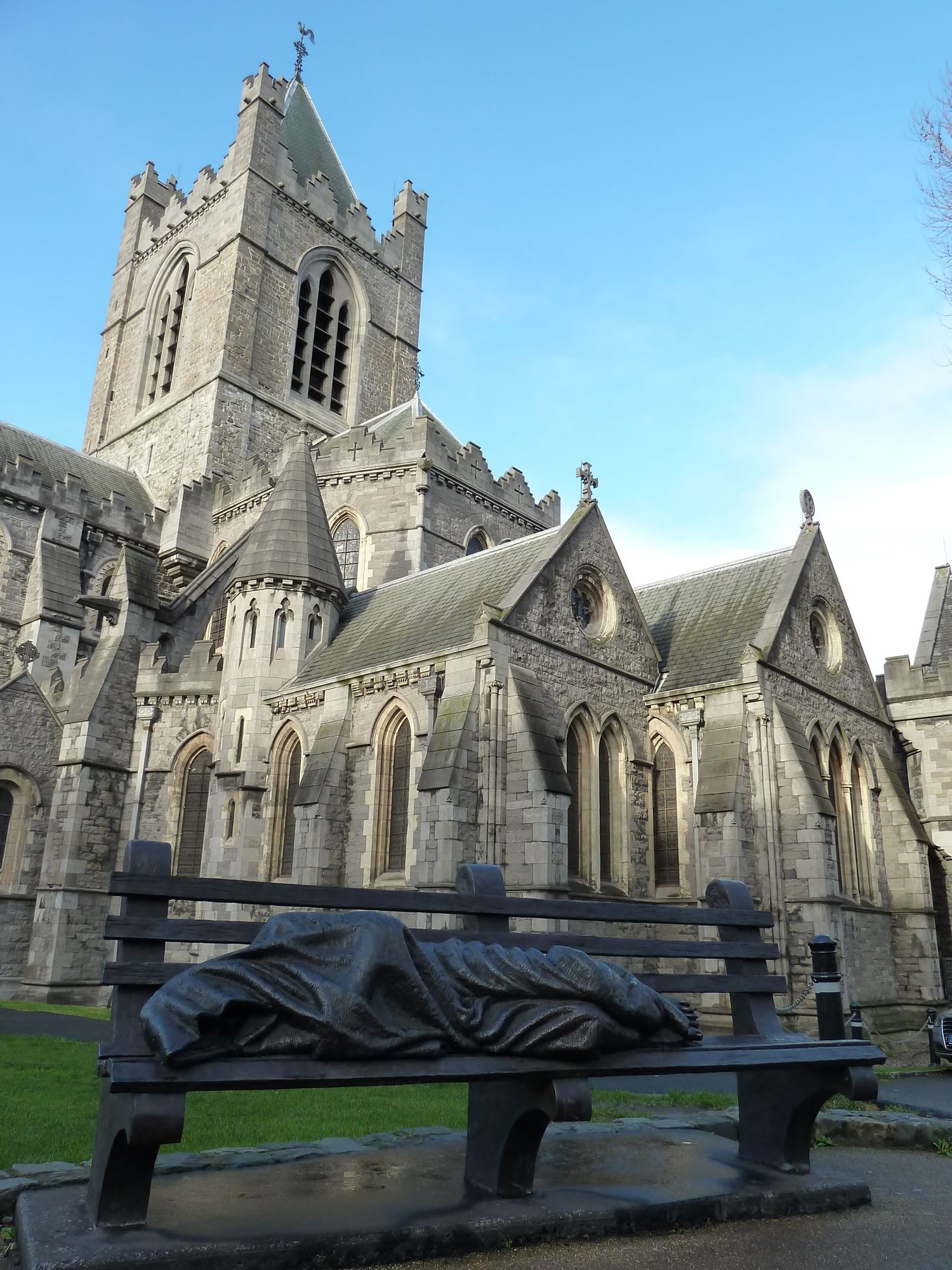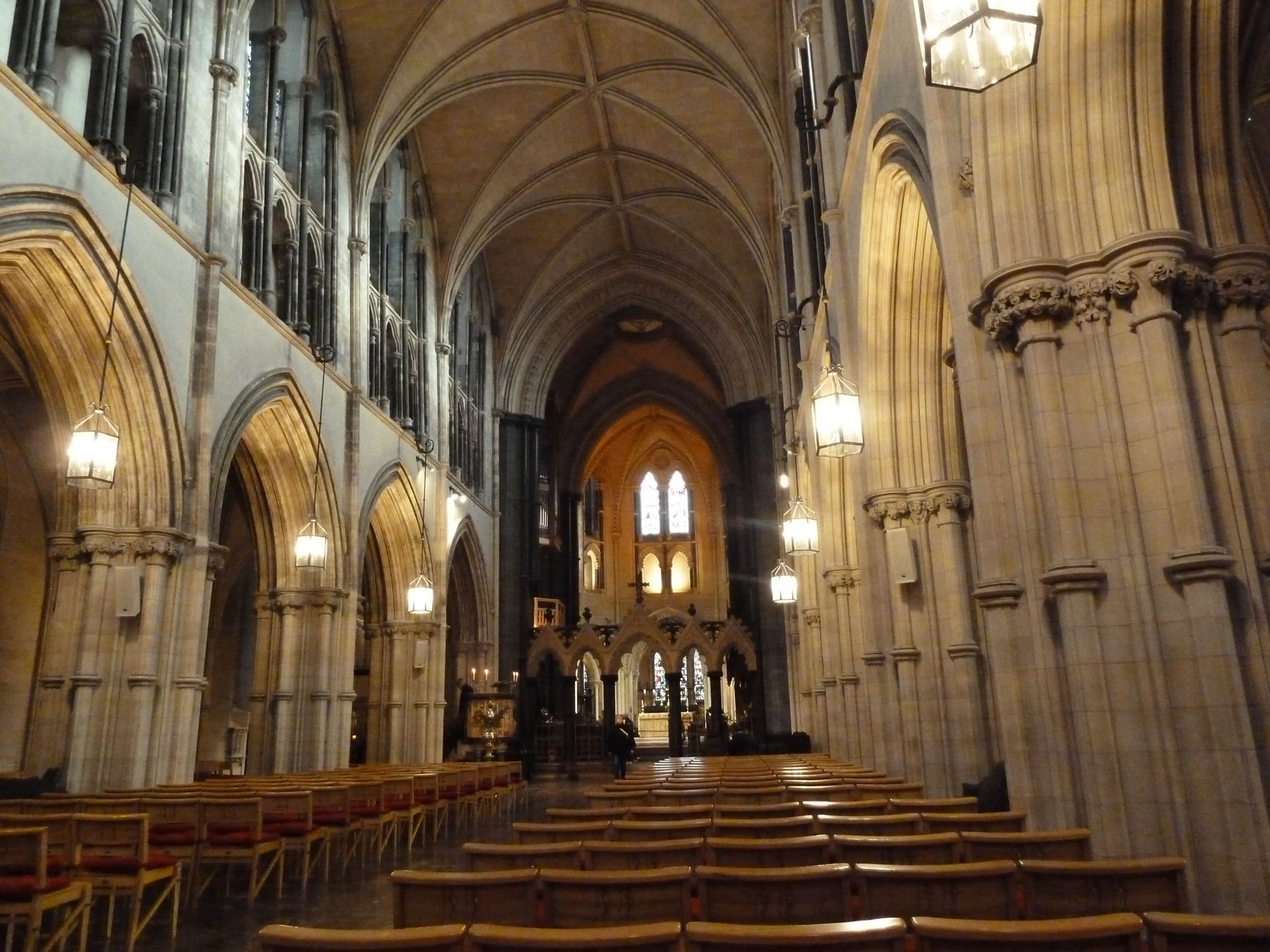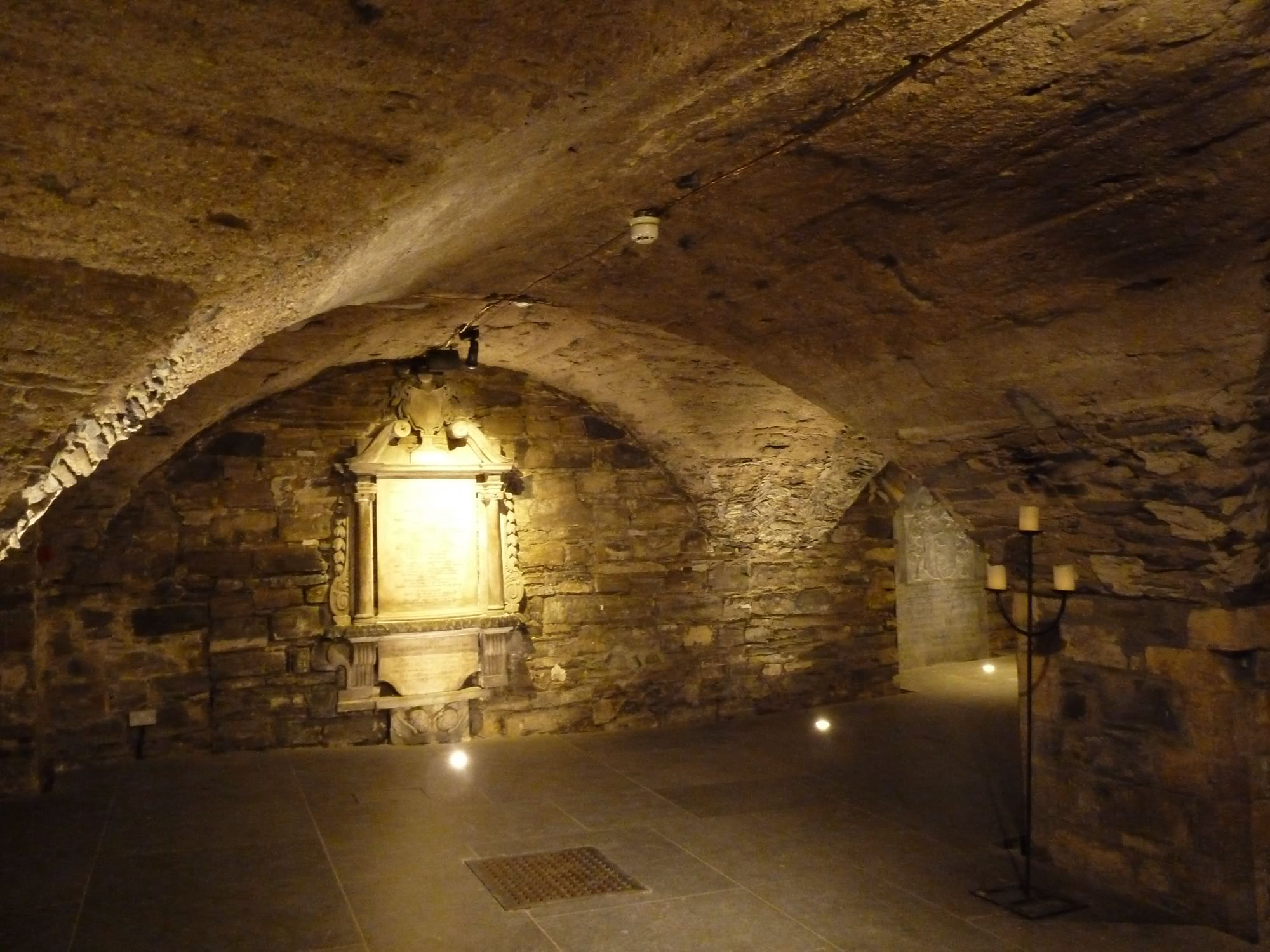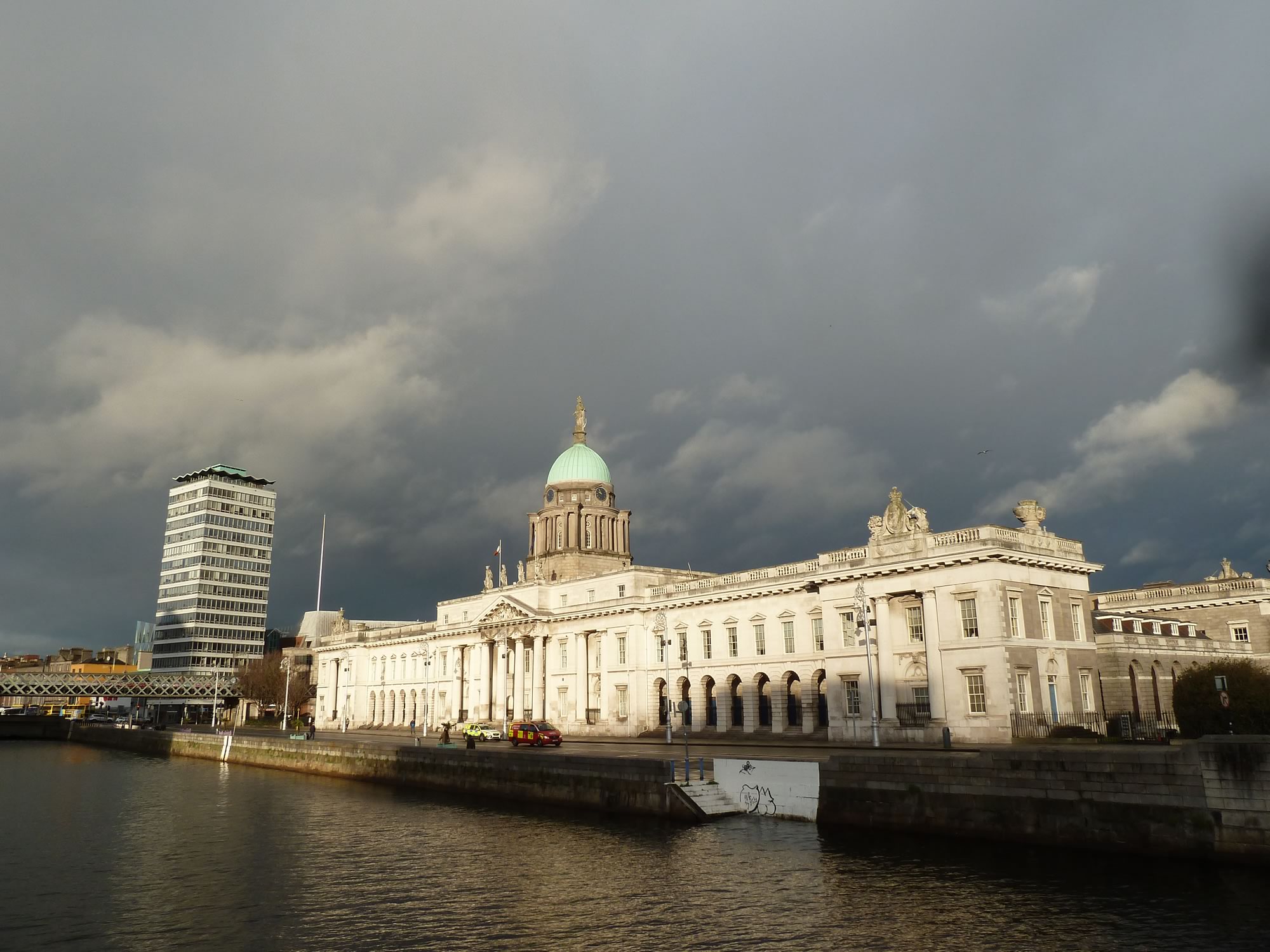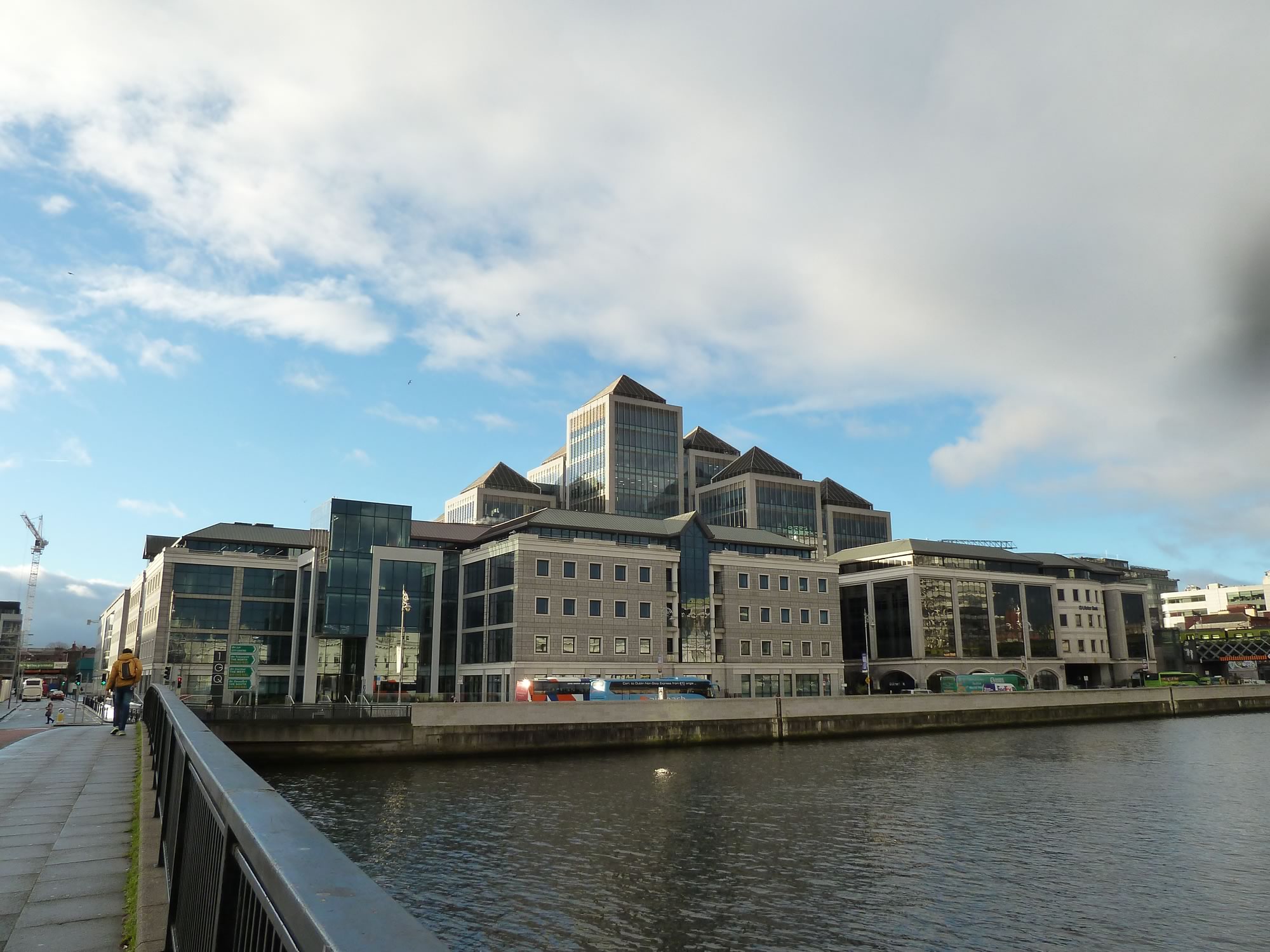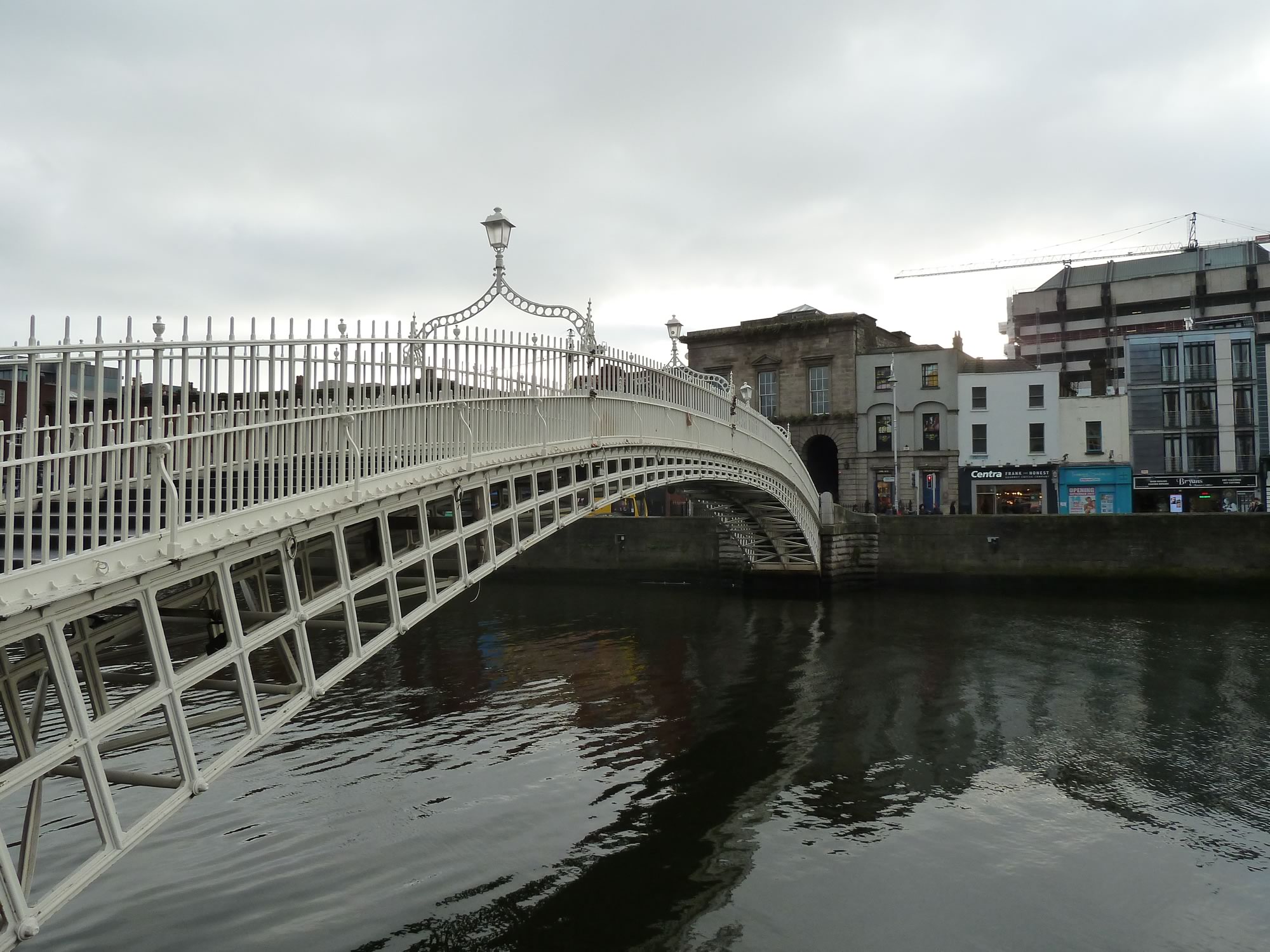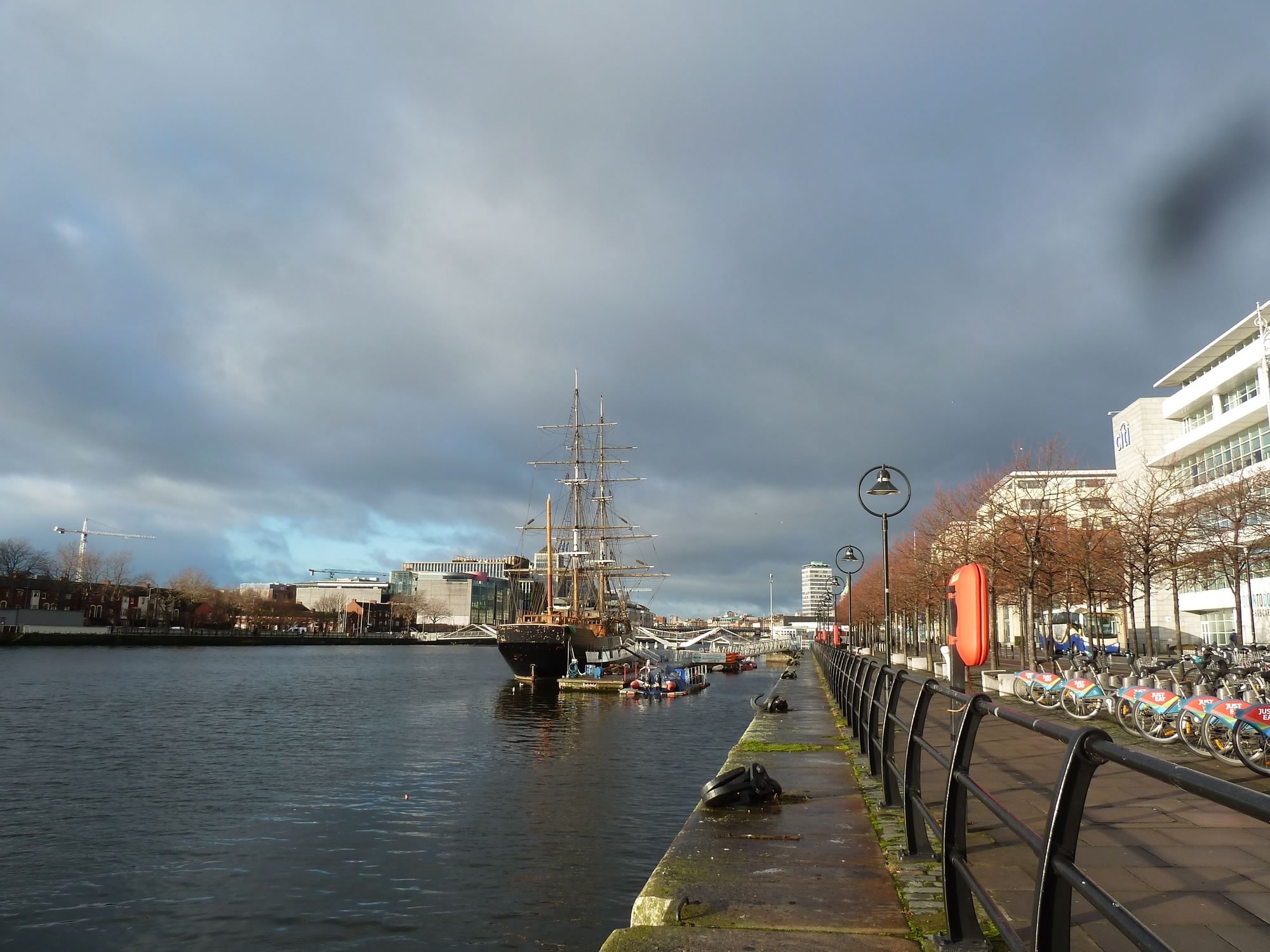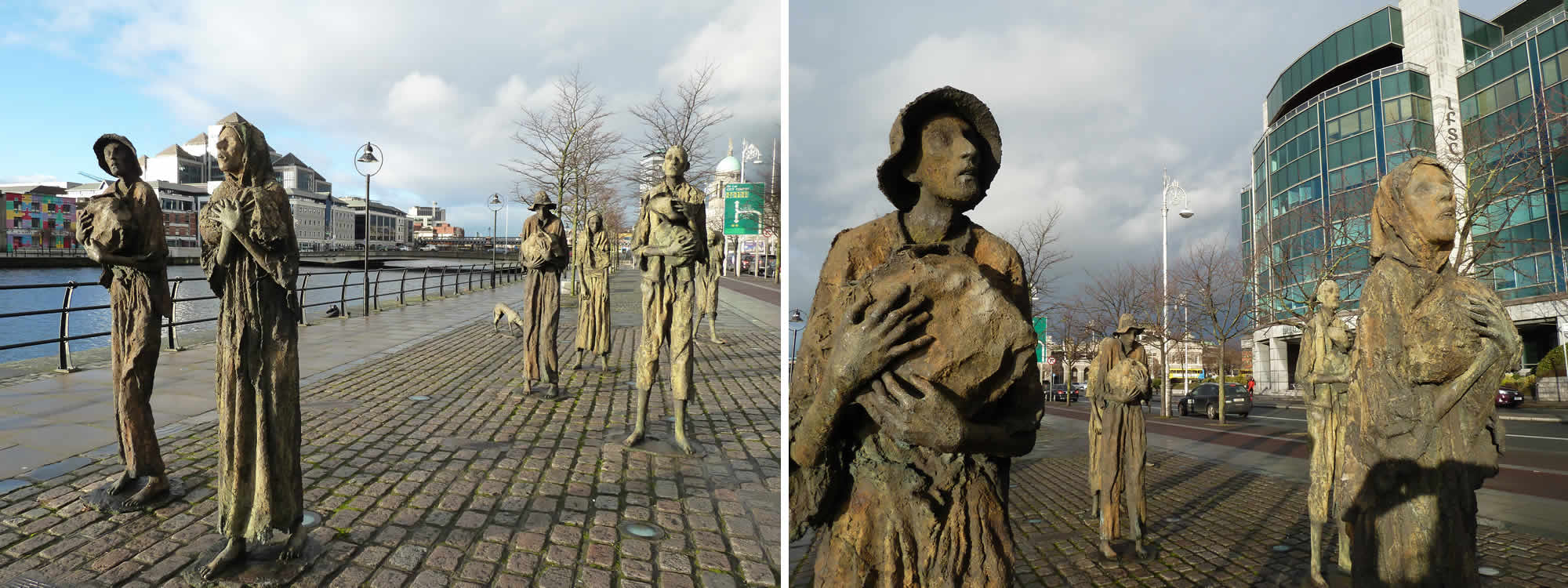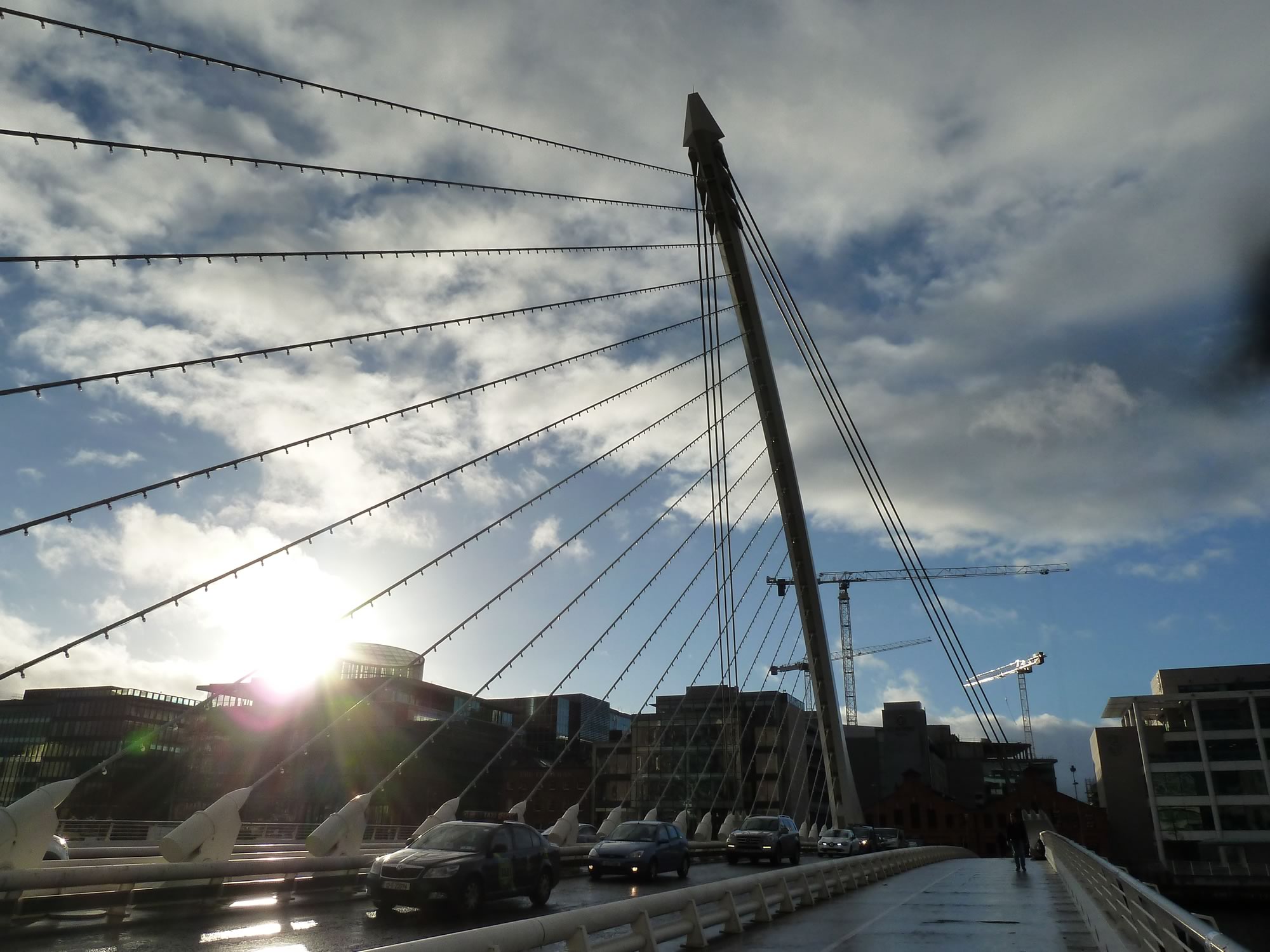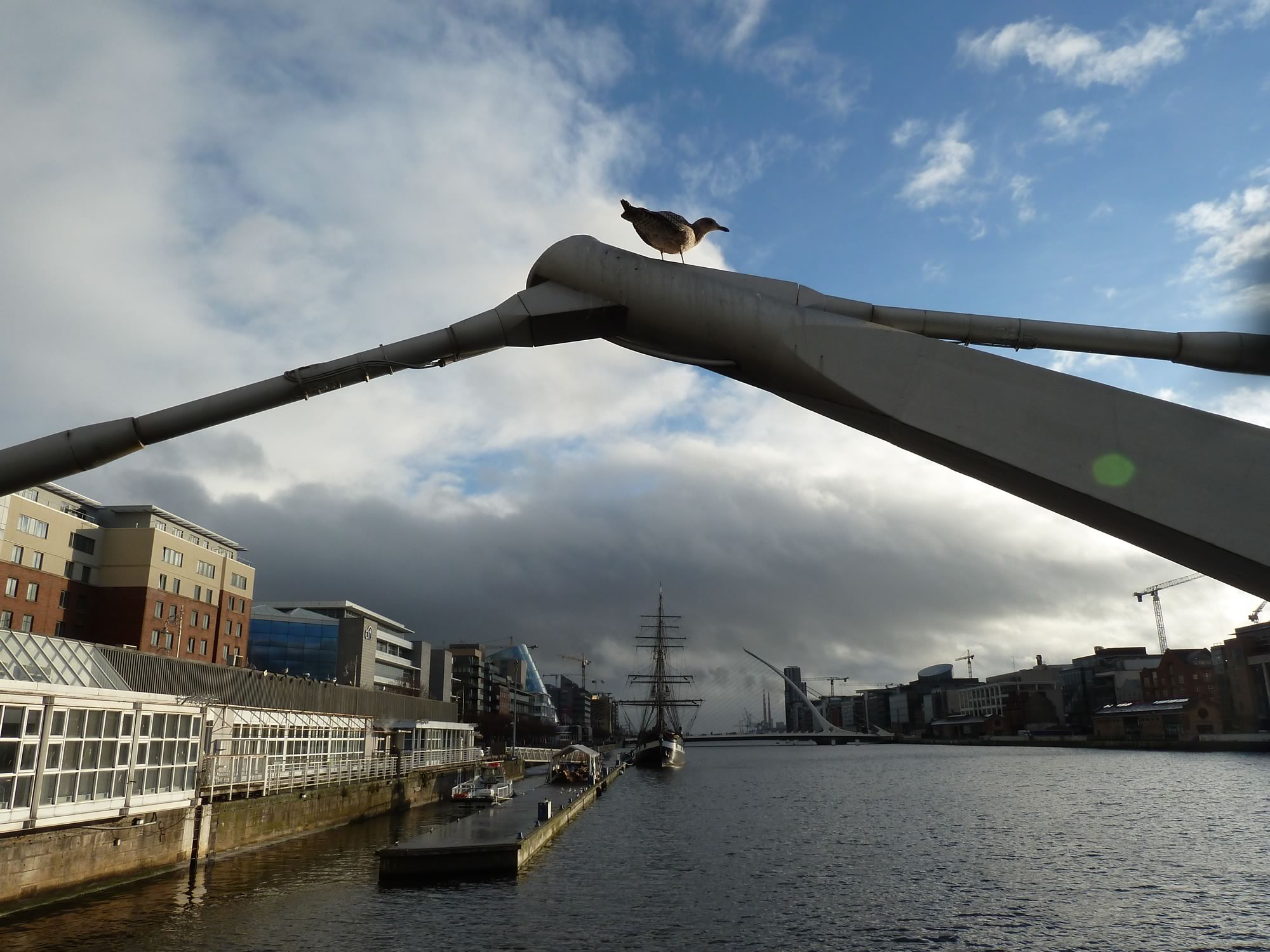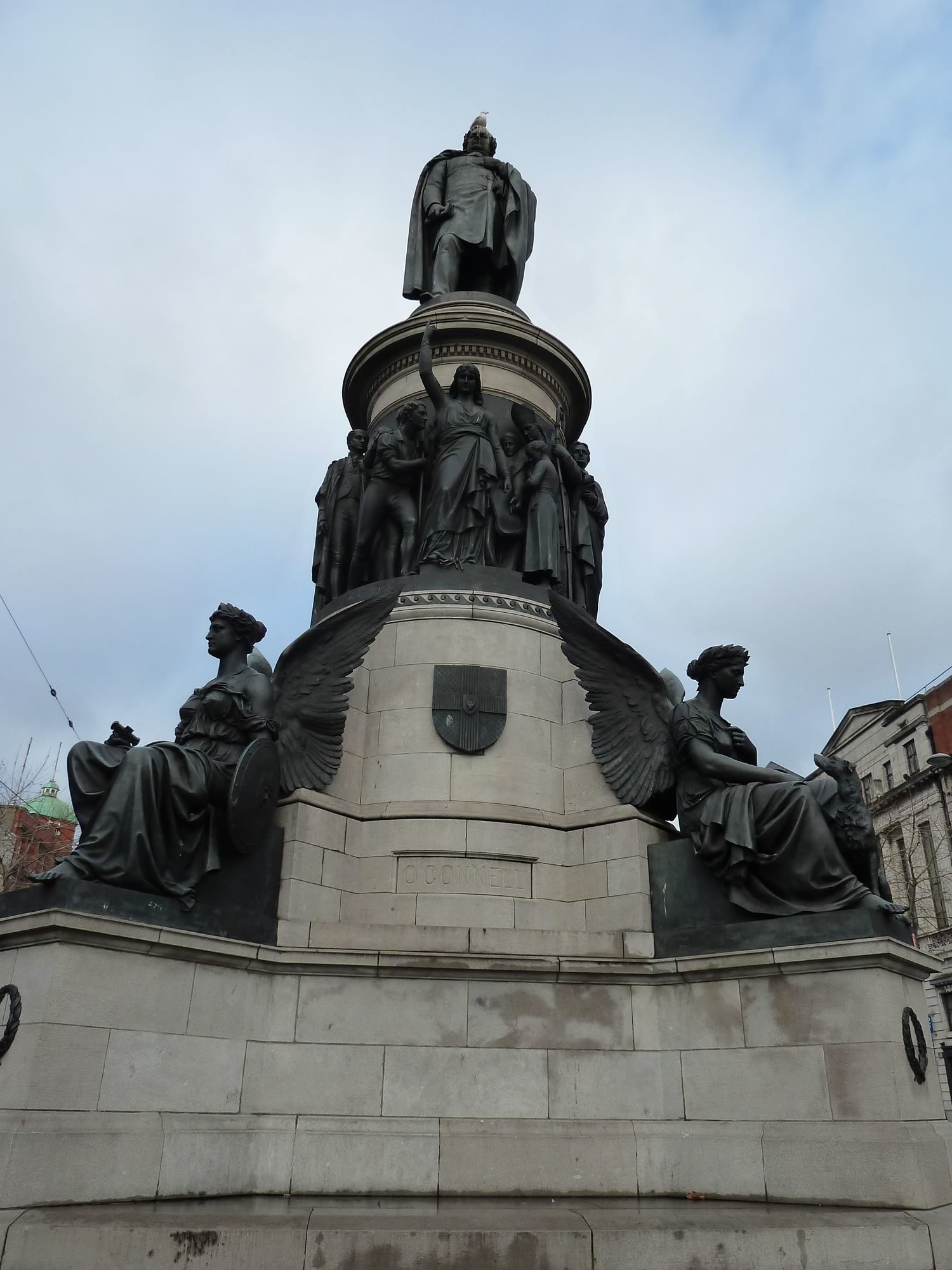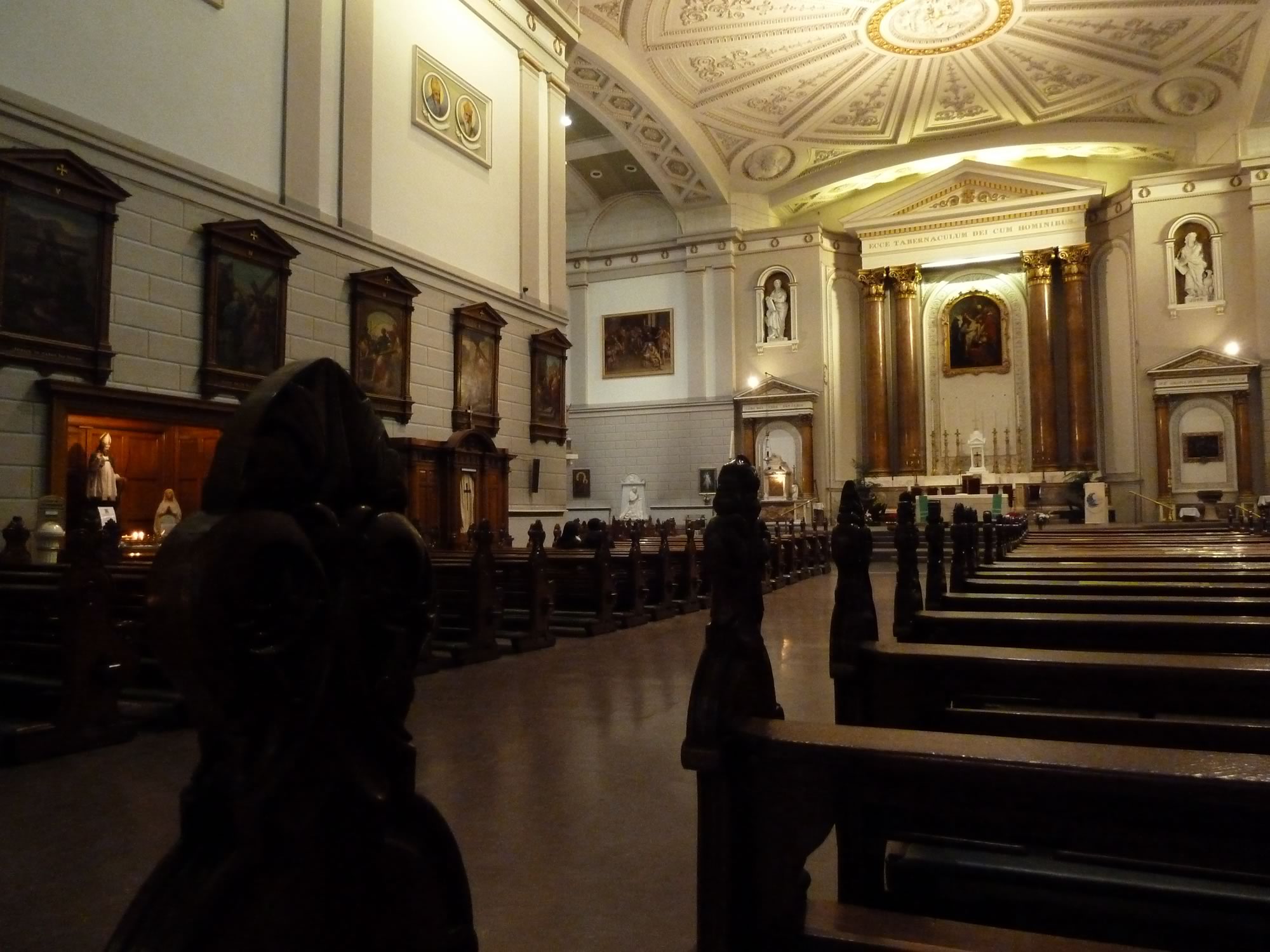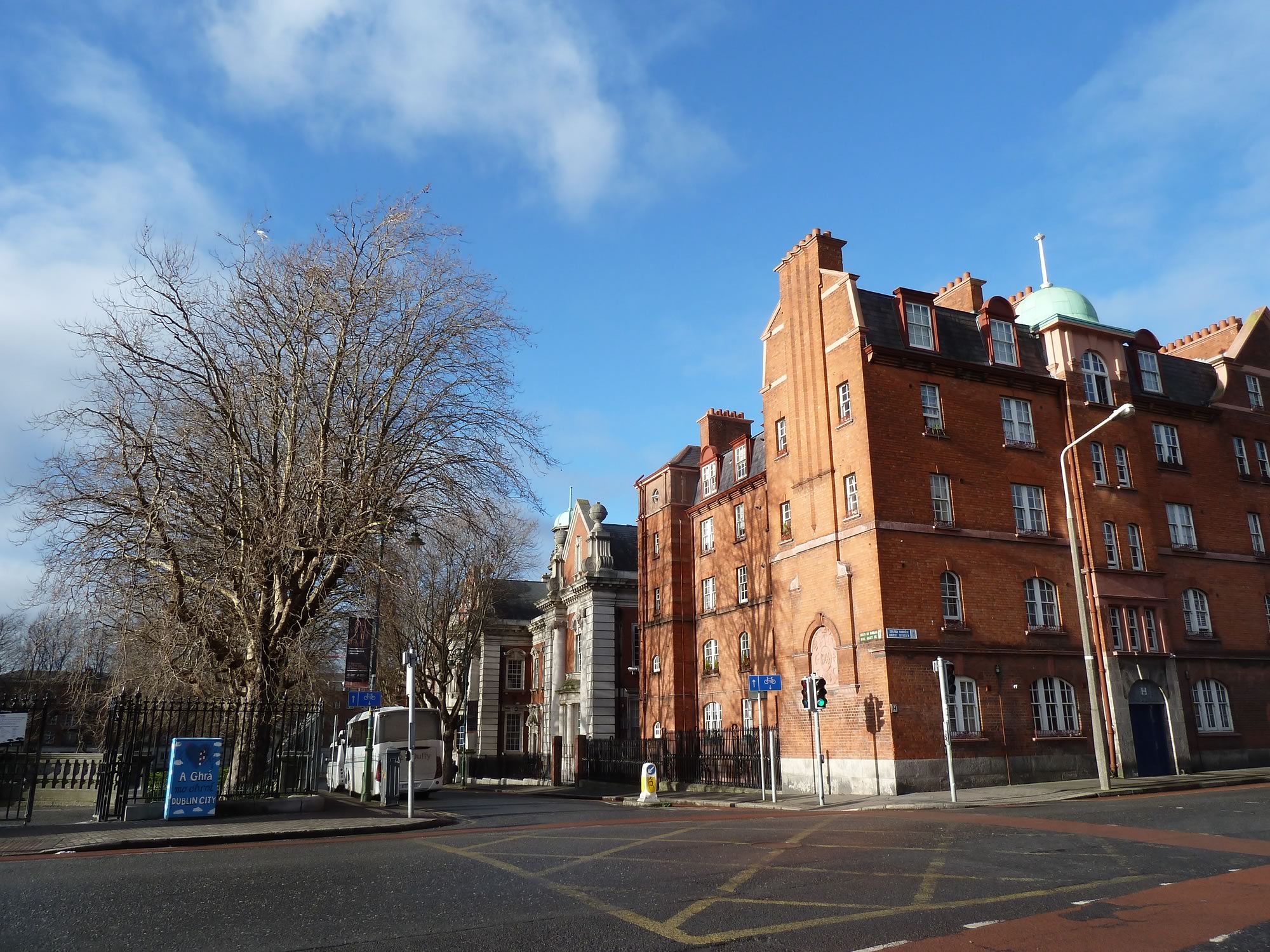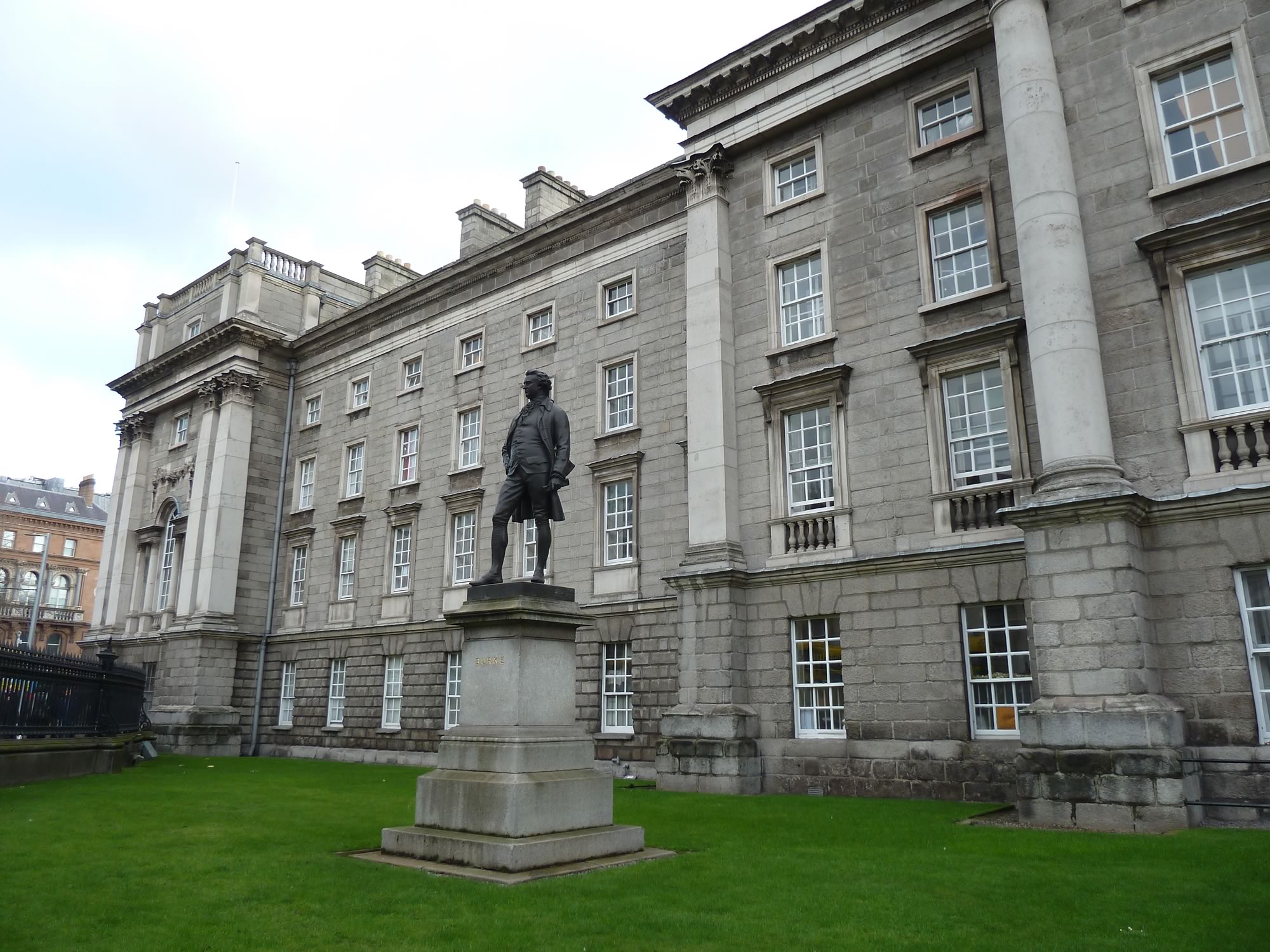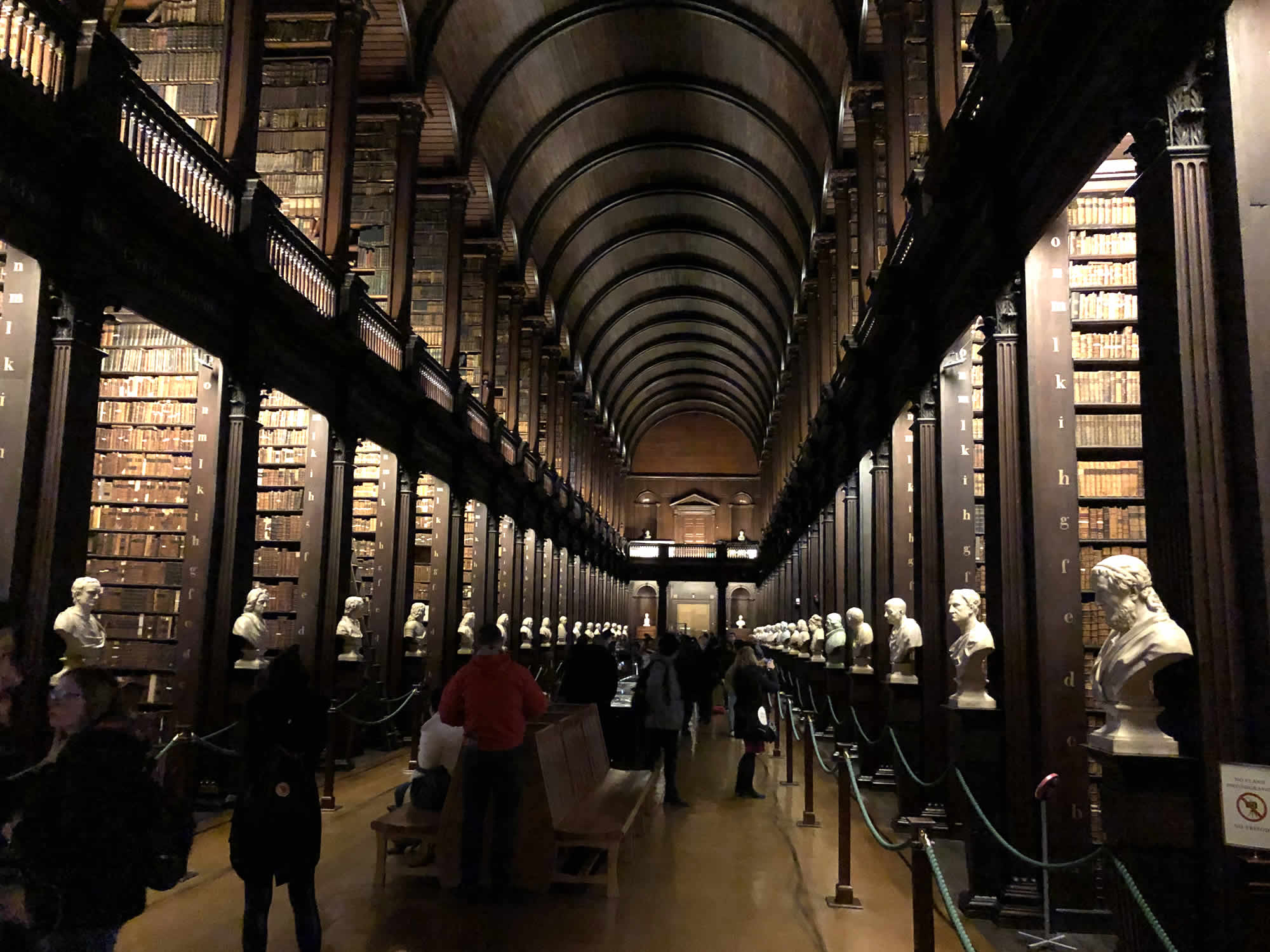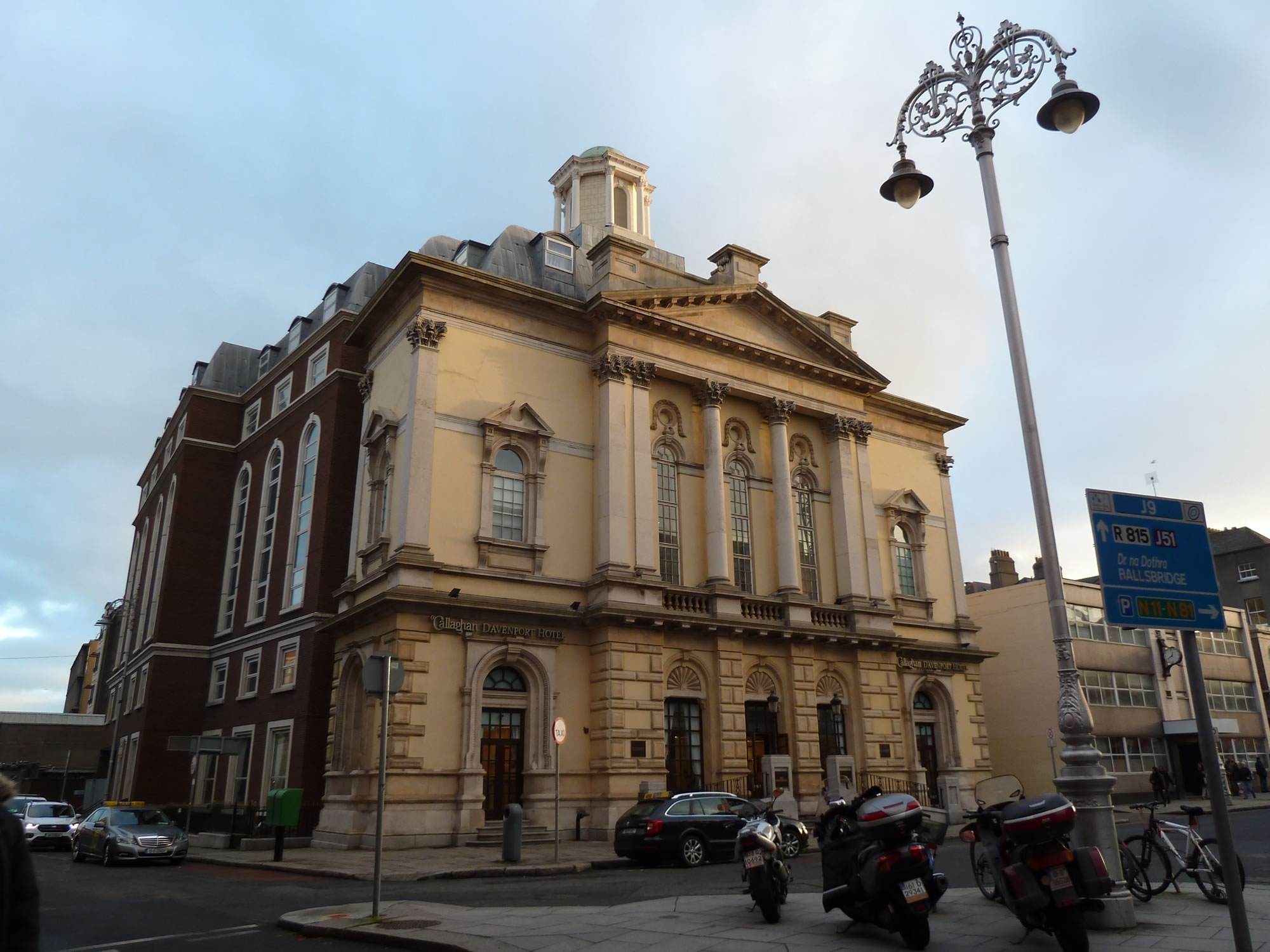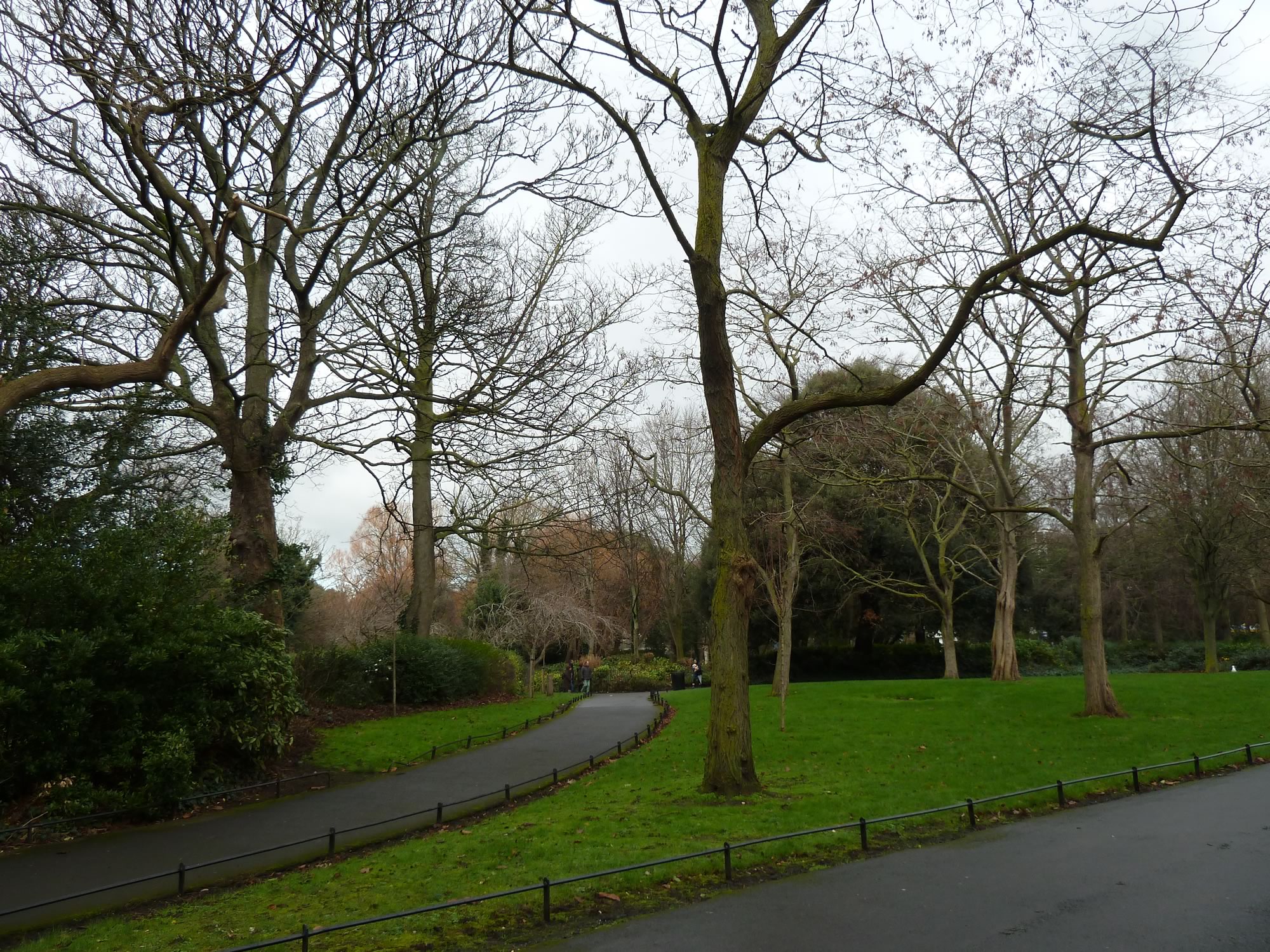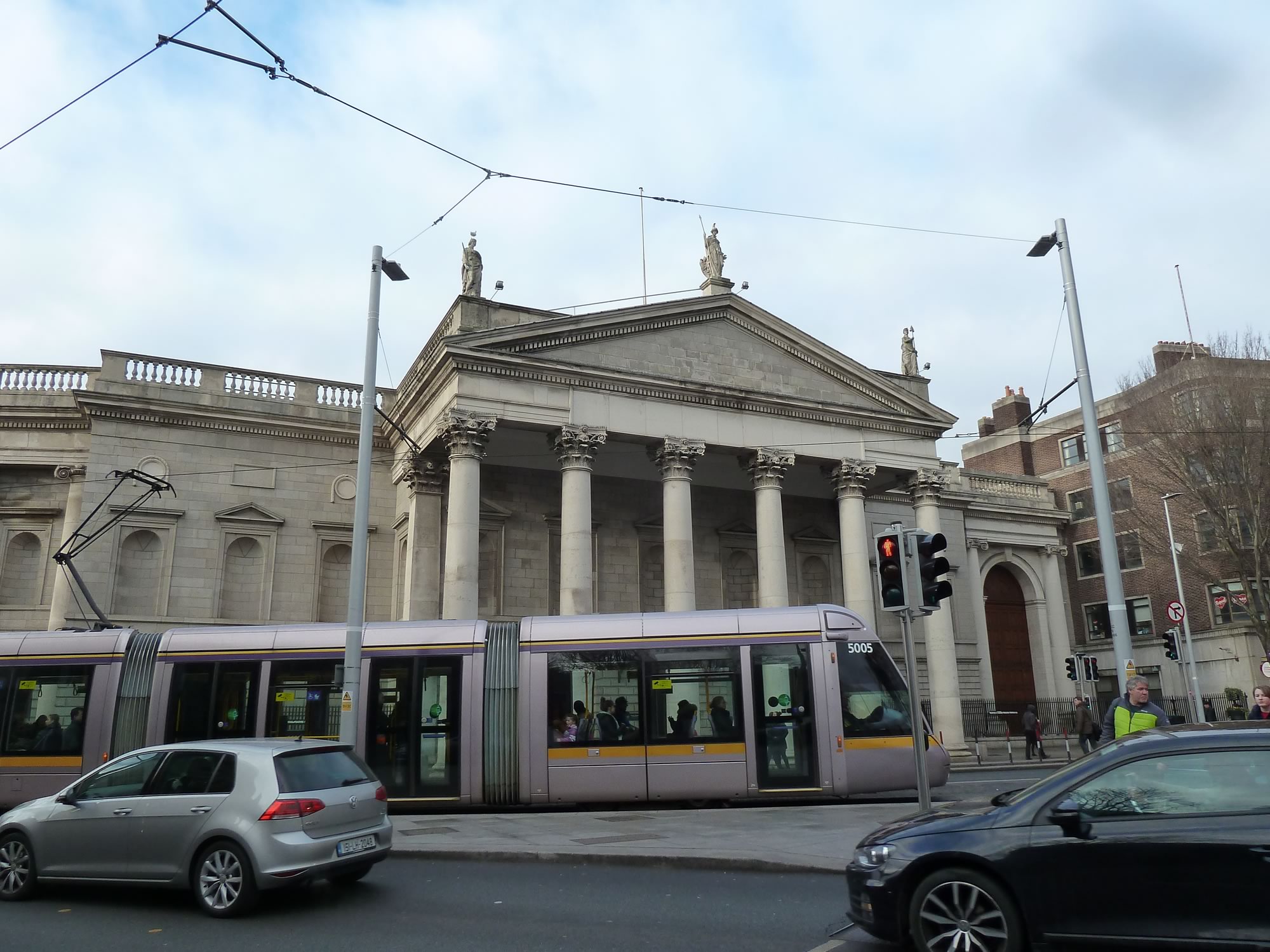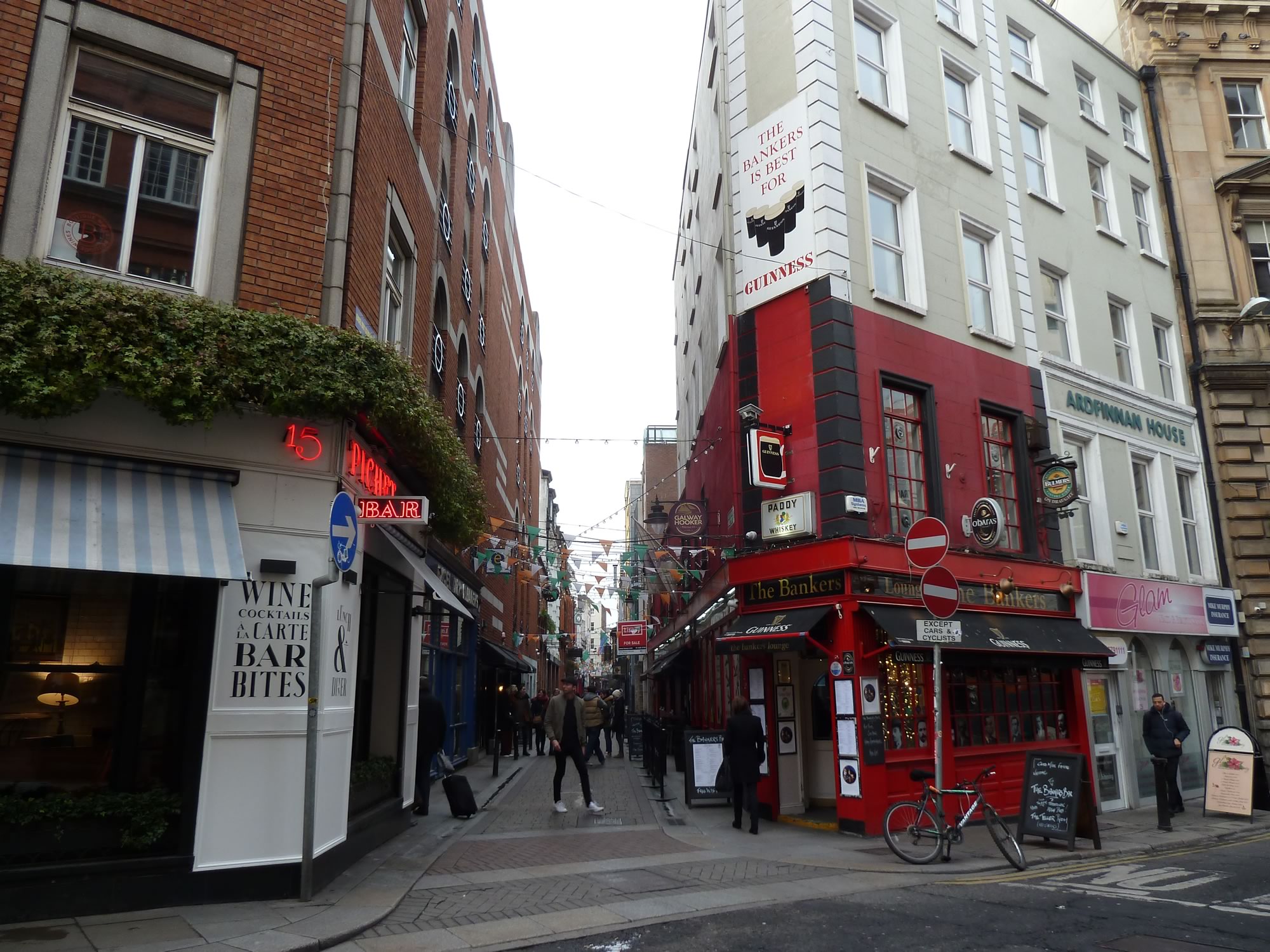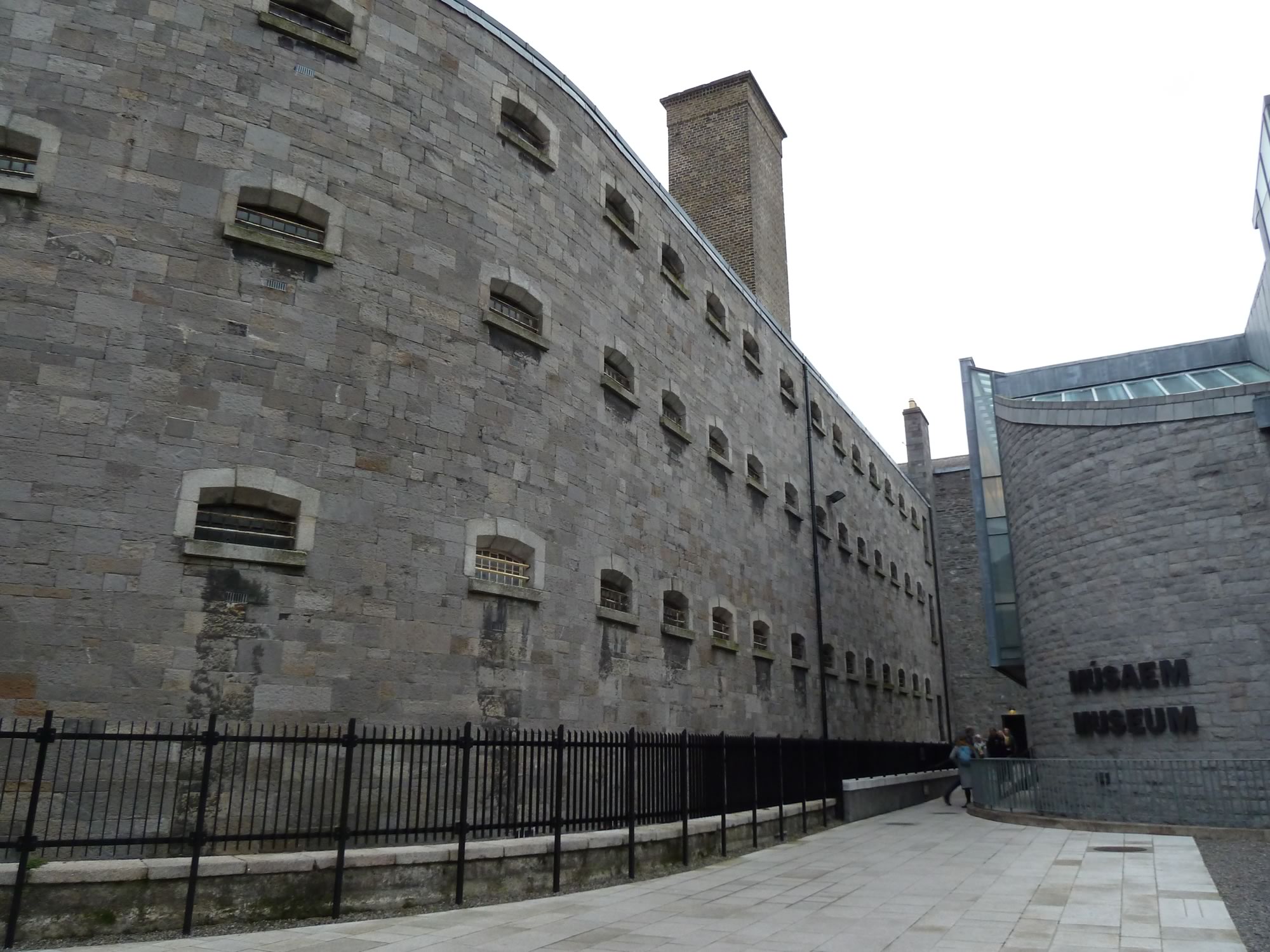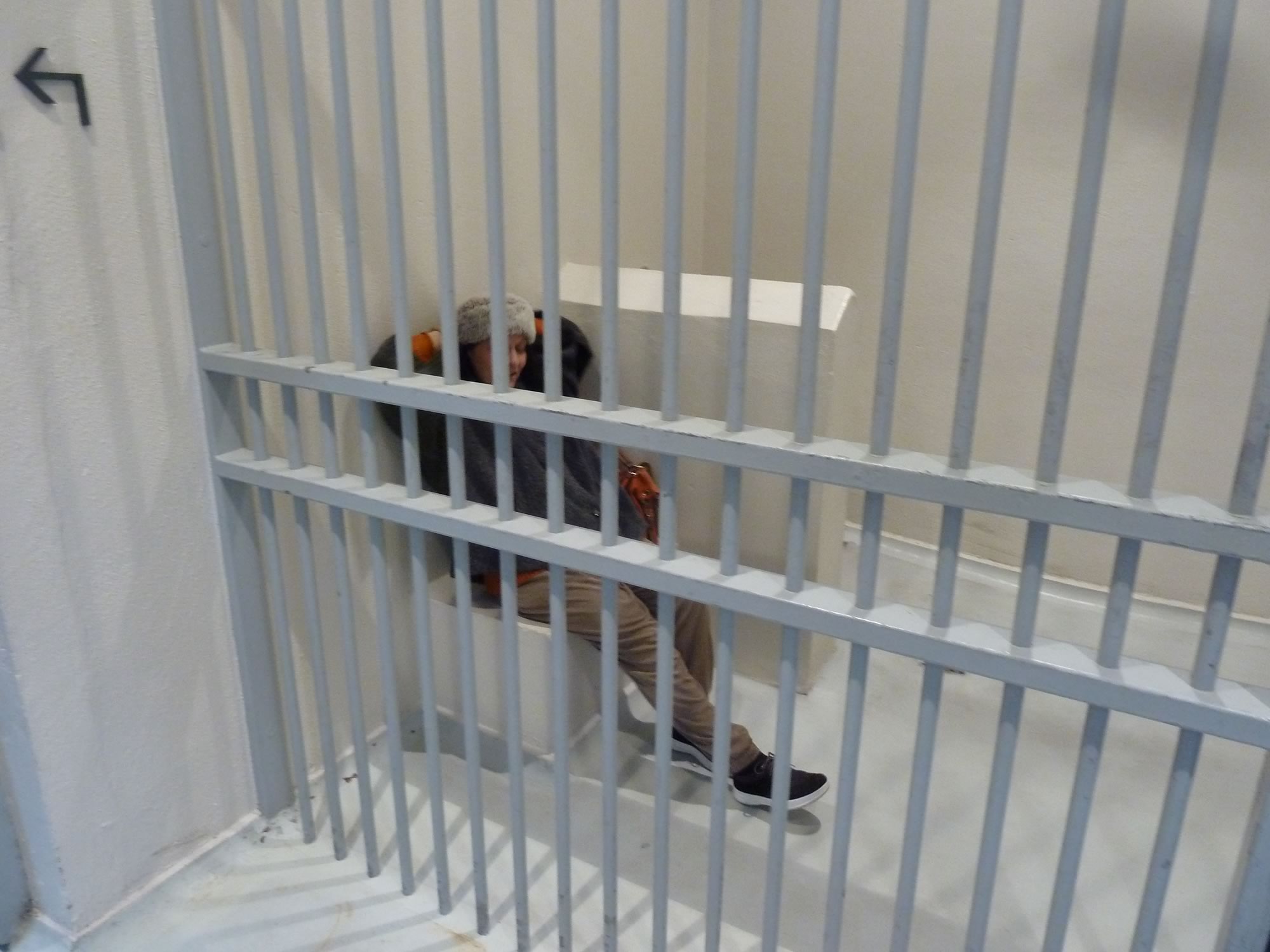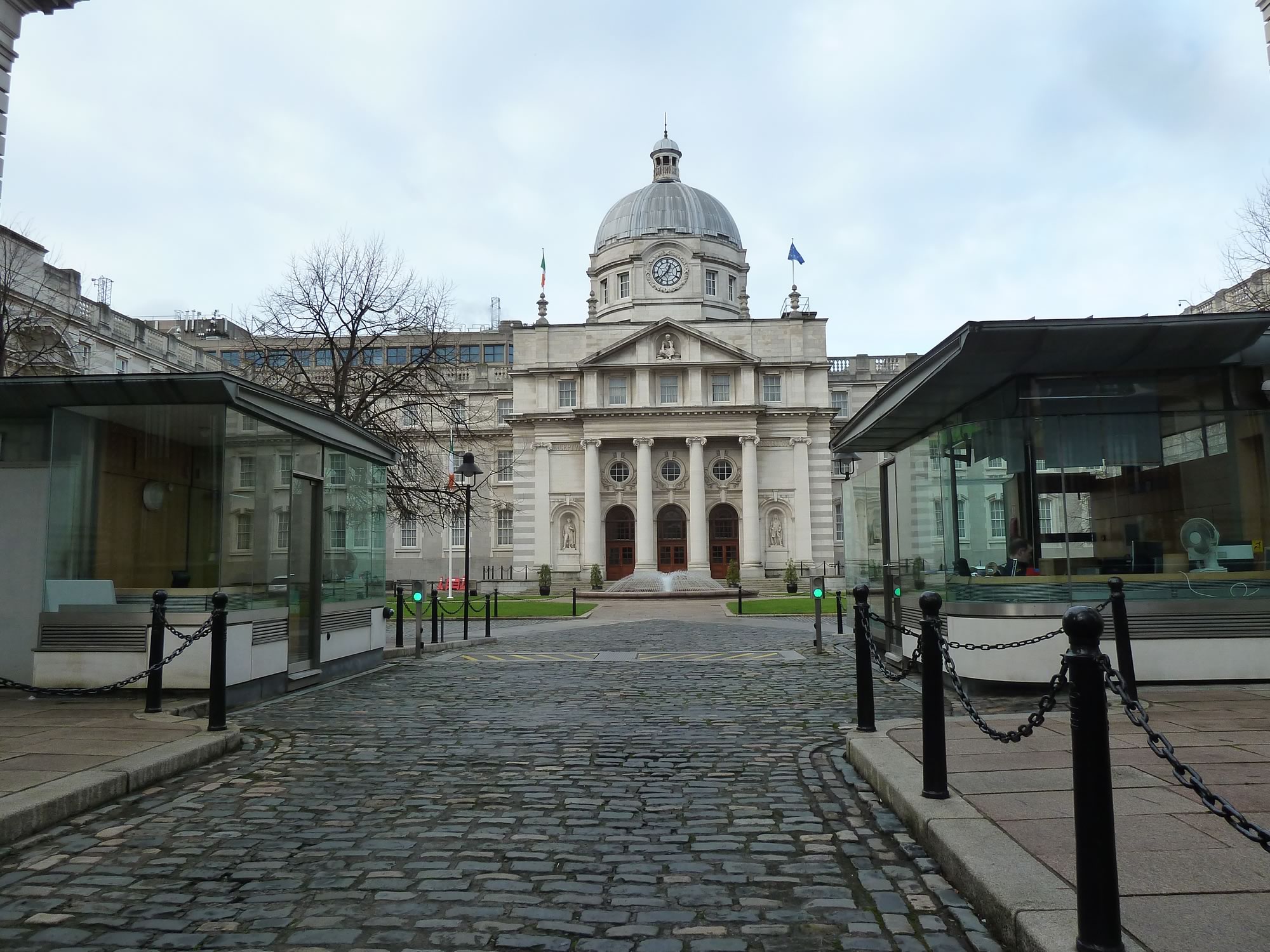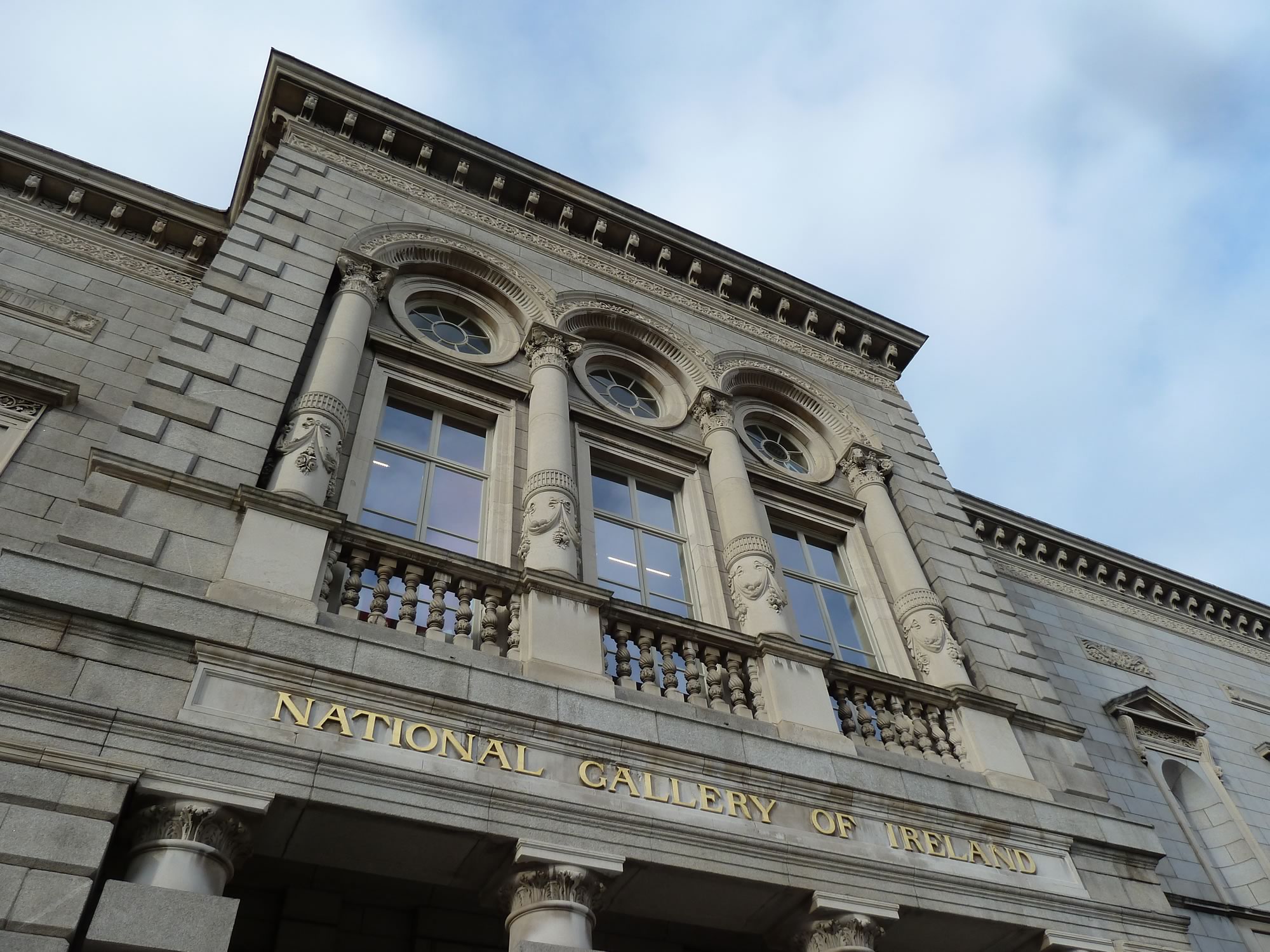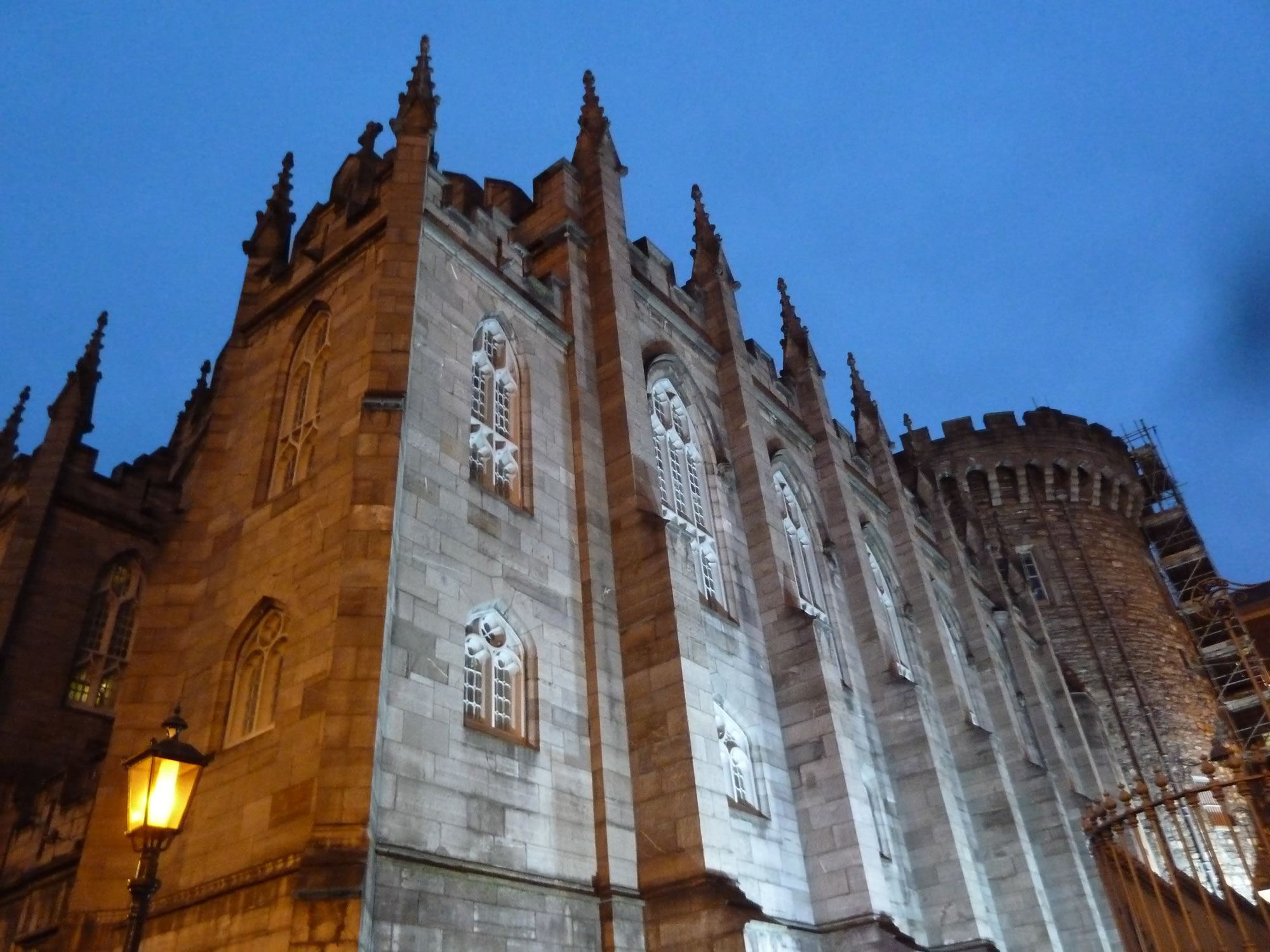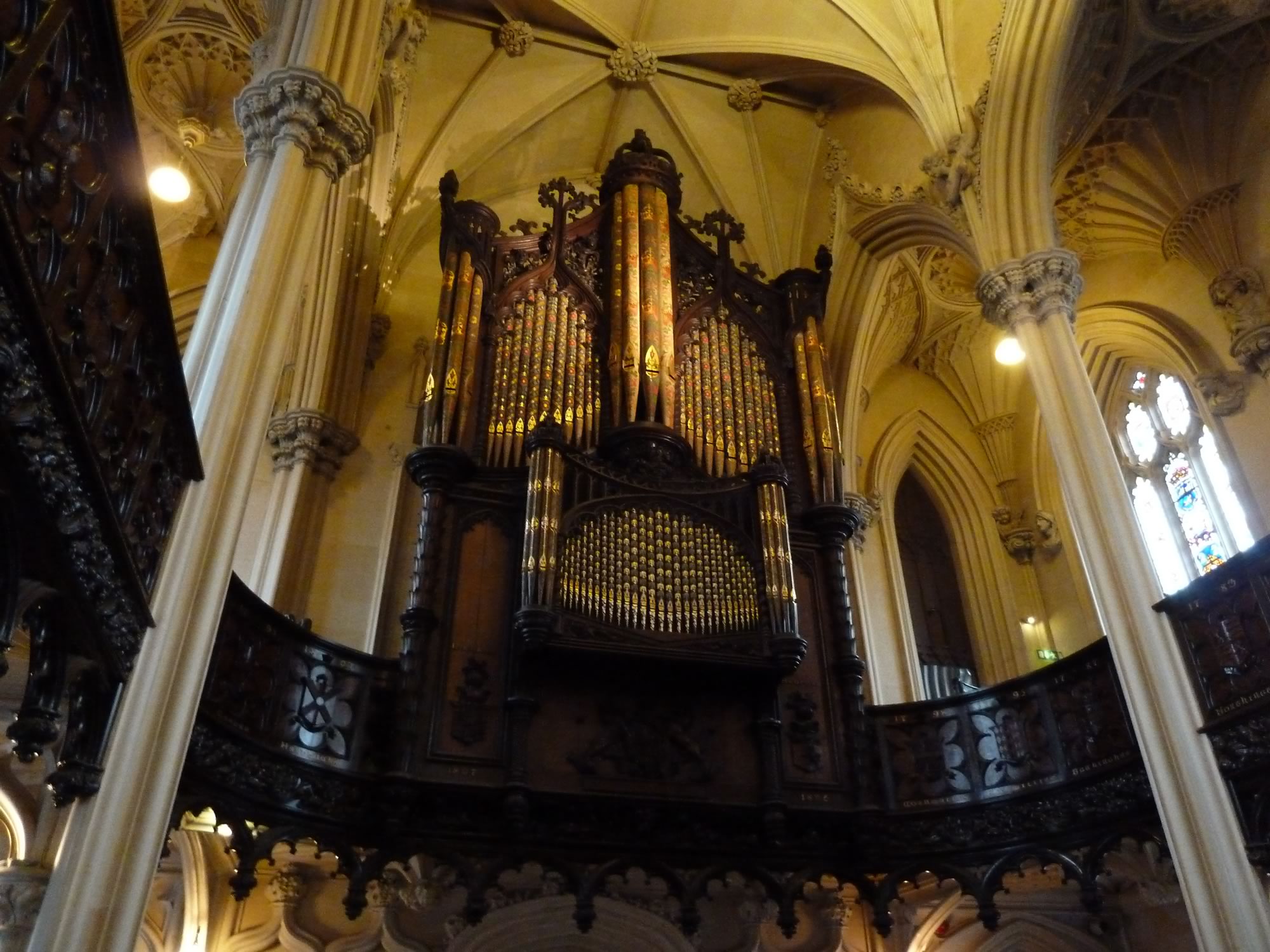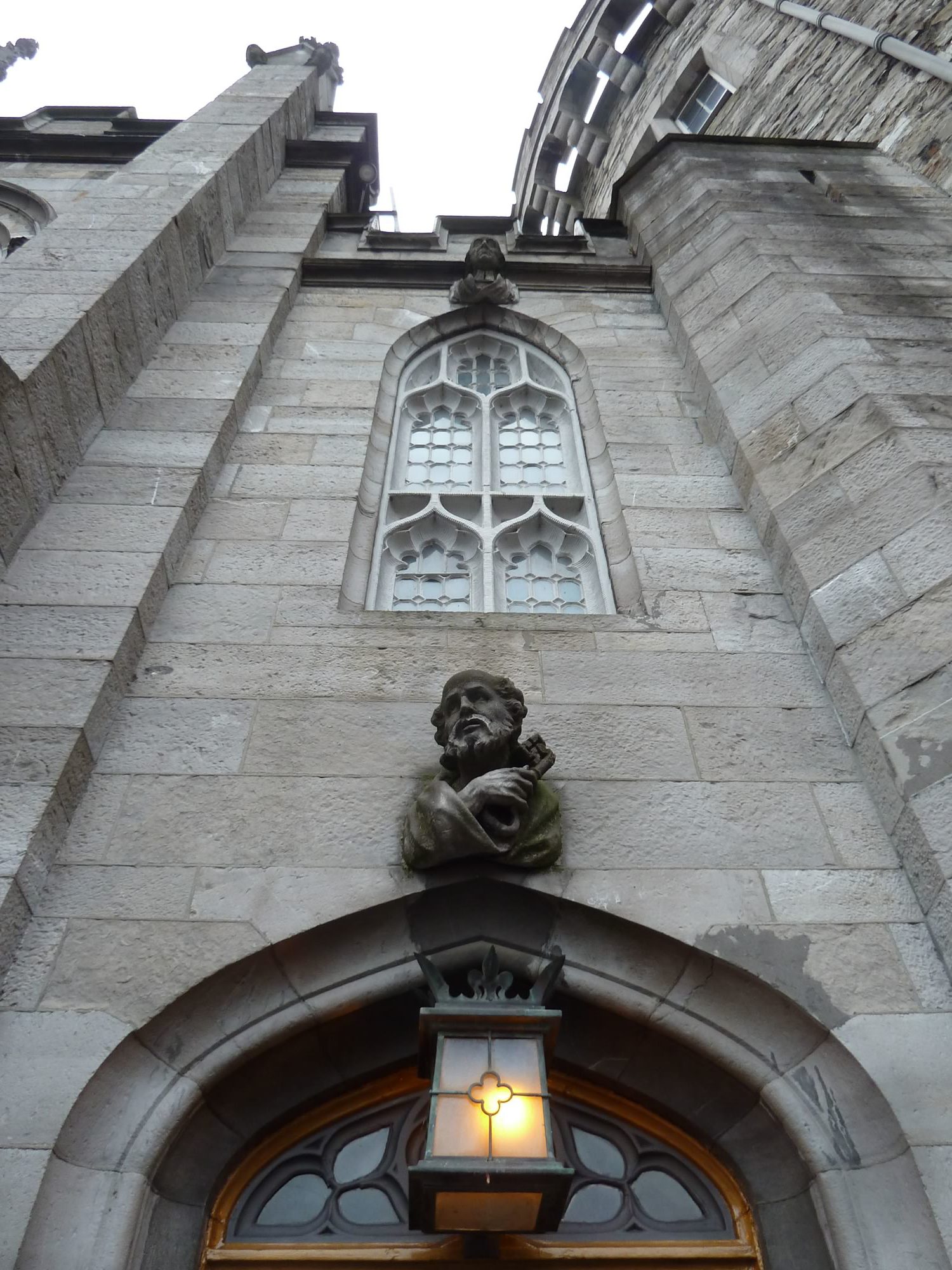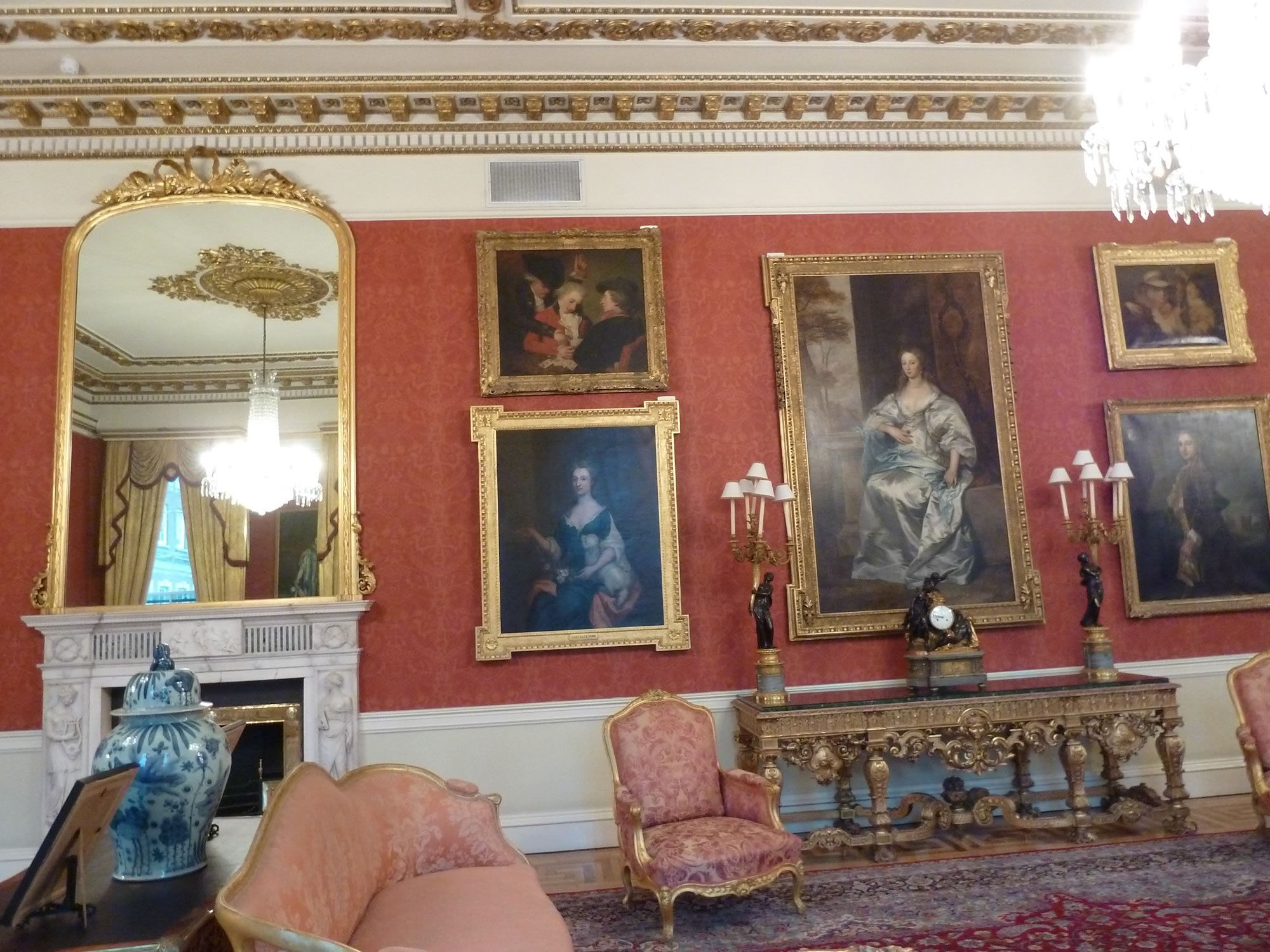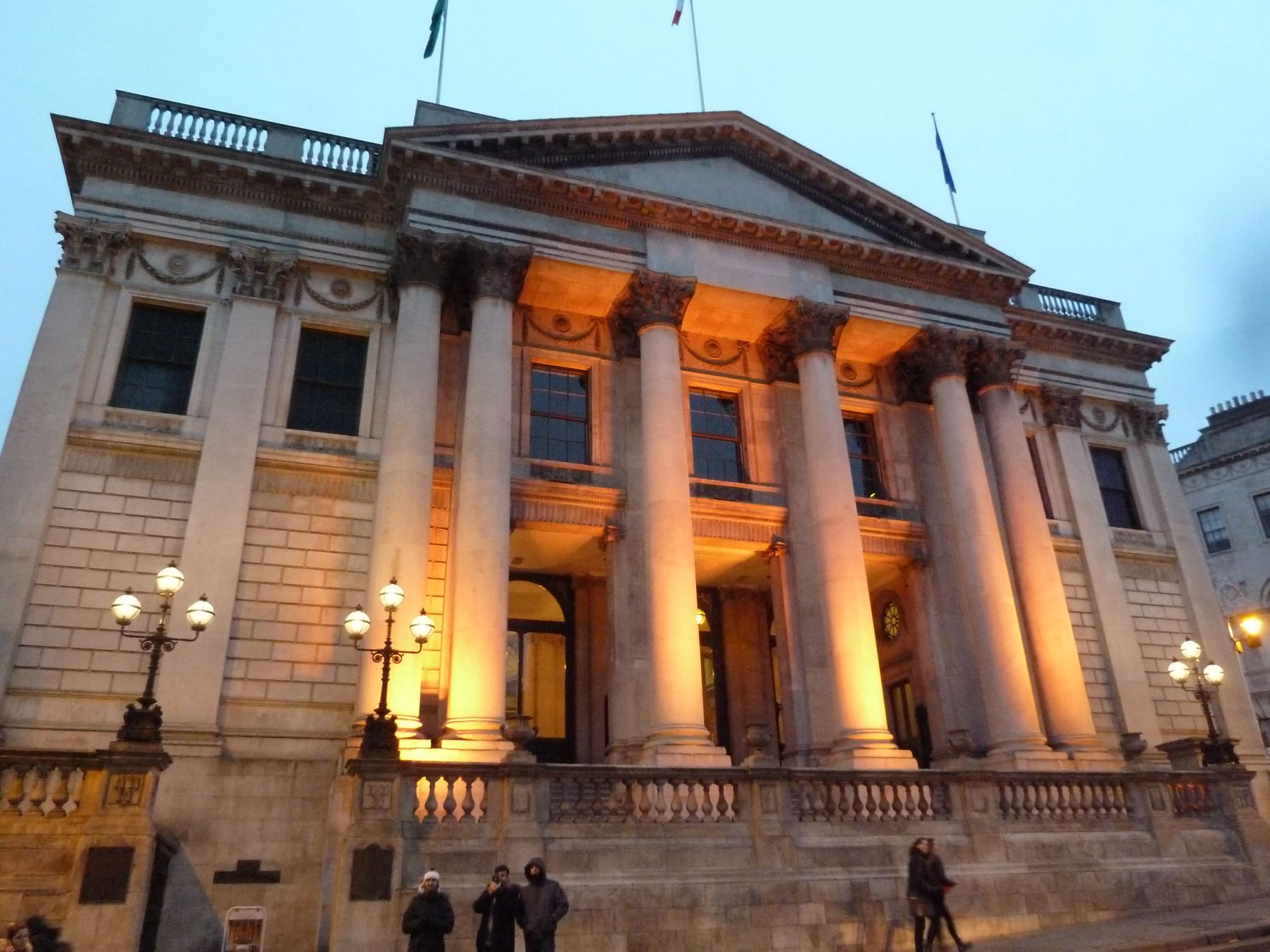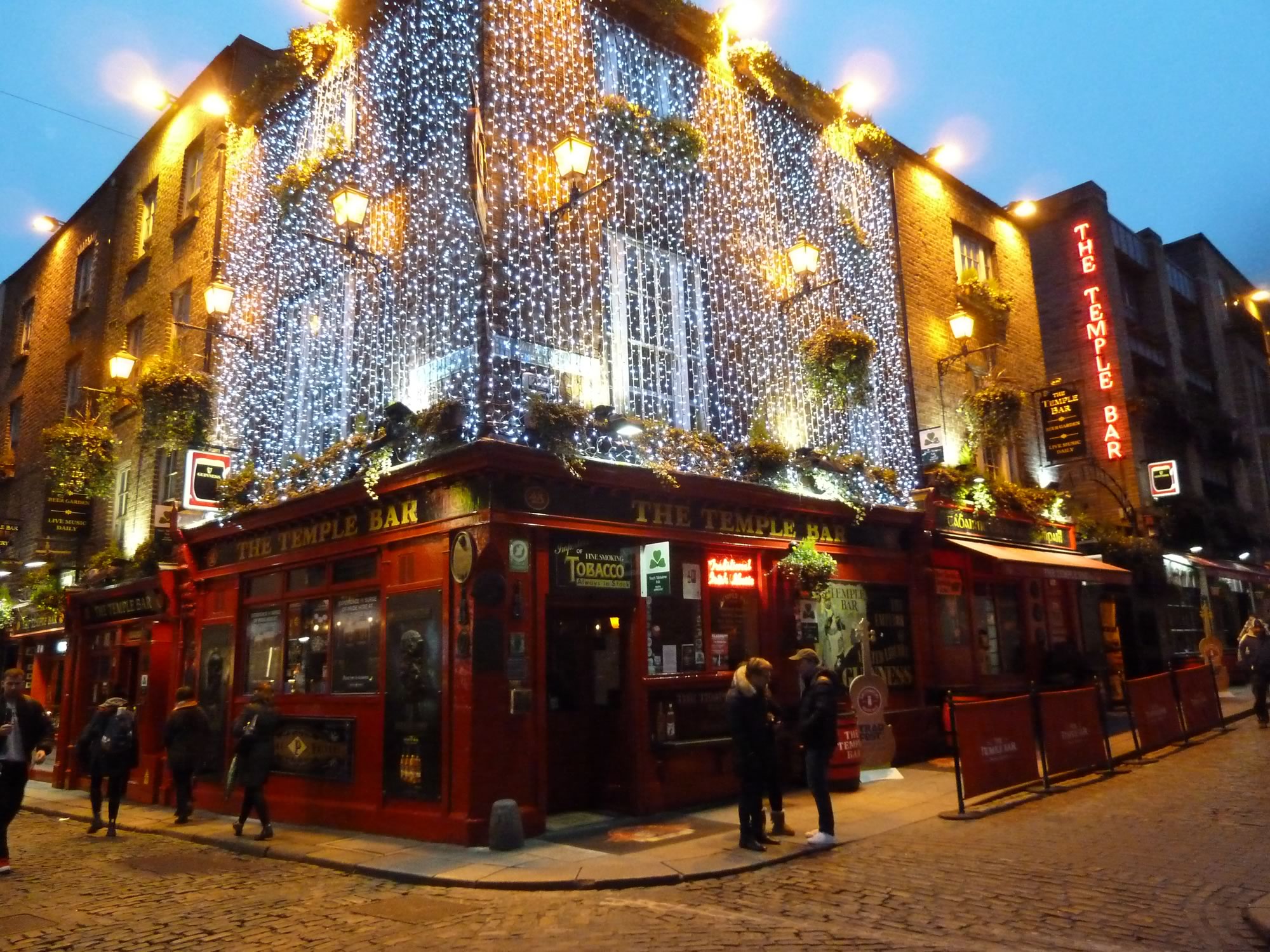Map of Dublin (Ireland)
Simon had been invited to give a talk at Trinity College, Dublin, so off we went for a 4-day tour of the Irish capital.
Strolling around beautiful Dublin
It was a mild winter weekend. We walked for hours along the river Liffey, visited churches, and spent the evenings with Simon’s colleagues.
The weather, like it often does, was on our side. All in all, we only got about five minutes of rain, almost as little as in my previous visit to Dublin.
Christ Church Cathedral & a striking sculpture
Christ Church is the oldest of the two cathedrals in Dublin.
Its construction started in the 12th century and, in spite of the unfortunate 1870s restoration, there’s much to admire in this massive building: the beautiful tile floors, stained glass windows, Strongbow’s tomb, and the never-ending columns.
Inside Christ Church Cathedral
The vaulted medieval crypt, though, was my favourite part of the cathedral.
In that vast space you’ll see the oldest known secular carvings in Ireland, historic books, priceless silver, and a most peculiar exhibit: The Cat & the Rat.
The Christ Church Cathedral crypt
The mummified cat and rat are displayed behind a glass, frozen in time.
The story goes that, in a chase, cat and rat ended up inside an organ pipe, got stuck, and were only discovered in the 1850s. Now, the unhappy cat is condemned to chase the rat for all eternity.
The imposing Custom House, in the winter sun
The new & the old in Dublin
Dublin has an intriguing mixture of the new and the old. At times, the mixture is stunning; others, it borders on the grotesque.
I’ll let you judge for yourself.
A typical Dublin monstrosity
This cast iron bridge started its life in 1816 as the Wellington Bridge, but independence changed many names in Ireland and it became the Liffey Bridge.
In reality, though, everyone knows it as the Ha’penny Bridge, because it used to cost a half-penny to cross it.
The Ha’penny Bridge
The winter light was striking.
I’m starting to wonder where Dublin’s reputation as a soggy place comes from. Years ago, I visited the city in August with friends for a few days, and we hit a heatwave. So much so that we ended up going to the beach.
Jeanie Johnston tall ship on the river Liffey
The 1997 Famine Memorial is the most humbling set of sculptures I’ve seen in all my travels.
The gaunt figures walk past you in silence, some clenching their babies, others holding on to their last possessions; and all with a faint, almost invisible sliver of hope on their faces.
The plaque on the ground is signed by Jean Chrétien, Prime Minister of Canada, and reads: “In memory of the victims of the Great Famine, and for their descendants who have done so much to build Canada”.
It’s a noble tribute to those who endured one of the darkest chapters in human history.
The poignant Famine Memorial
More churches & bridges
St. Patrick’s, the second cathedral in Dublin, is the tallest and largest church in Ireland.
Its 43 m (141 ft) spire is impressive, but it wouldn’t do well in a height competition against the Saint Corentin Cathedral in Quimper that we saw a few months earlier.
St Patrick’s Cathedral from St Patrick’s park
The handsome Samuel Beckett Bridge is a reminder of Dublin’s love for the modern.
In case you’re wondering, Samuel Beckett is one of the three Nobel Prize for Literature laureates born in this city. The other two are: George Bernard Shaw and William Butler Yeats.
The Samuel Beckett Bridge over the Liffey
Twenty-one. That’s the number of bridges over the river Liffey in Dublin. On Friday, while Simon was giving his talk at Trinity College, I walked along the river and saw all of them.
View from the Sean O’Casey Bridge
Daniel O’Connell (1775 – 1847) is one of Ireland’s great heroes. He was an Irish nationalist leader who campaigned for Catholic emancipation and the repeal of the Act of Union.
To many, he’s known as The Liberator.
Monument to Daniel O’Connell
The river Liffey divides the city into two distinct areas. The poorer, run-down north; and the trendy, elegant south.
Inside St. Andrew’s Church
Our pretty hotel was just north of the river, not too far from Custom House.
The elegant Liberties College
Visiting Trinity College, Dublin
Trinity College is the sole constituent college of the University of Dublin.
When queen Elizabeth I founded it in 1592, the purpose was to educate the Protestant Anglo-Irish Ascendancy. It wasn’t until 1793 that Catholics were admitted, albeit with certain restrictions.
Trinity College, main entrance
Those restrictions were lifted in 1873, but the Catholic Church in Ireland had by then declared that attending Trinity College was a mortal sin. The Church didn’t change its mind until 1970.
I seem to learn something wacky every day.
Maria’s translation of the Book of Kells guide
In our visit to Trinity College we went to see the Book of Kells, the 9th century illuminated manuscript considered by many the finest in the world.
Years ago I translated this small guide to the manuscript, and I couldn’t help buying a copy in the bookshop. That, incidentally, was the most rewarding job I ever did as a translator.
Trinity College Old Library *
In spite of the astonishing number of eyesores, Dublin still has an unfair share of magnificent buildings.
One of the many handsome buildings in Dublin
A bit about the Irish language
I didn’t know until recently that Irish is the first official language of the Republic of Ireland.
In Dublin, you won’t fail to notice that all official signs have Irish at the top, and English, in a smaller font, below it.
It’s good that there’s some English, because the Irish language is as impenetrable as Scottish Gaelic. Both are related. In fact, Gaelic comes from Irish.
St Stephen’s Green, a historic landmark
The old streets of Dublin are a maze. At some point during my walk, after I’d seen all the bridges, I headed south and got irredeemably lost. I went past an indoor market, and got to the Temple Bar area where we’d been the evening before.
I then retraced my steps and started going round and round in circles. I have to admit, I ended up at St. Patrick’s cathedral not once but three times within an hour. Having a dodgy map is clearly worse than having none.
A tram going past the Bank of Ireland
Dublin is the largest city in Ireland, and has a population of over 1,1 million.
We knew it was a popular tourist destination, but we weren’t prepared for what we saw. There were tourists everywhere, and it was only mid-January.
I wonder how busy it gets in the summer, not that I’m coming to see it.
A typical Dublin street
Going to gaol
Getting the tram and going to Kilmainham Gaol was one of the highlights of our trip.
When we got there, there were no tickets left for the day, which was somewhat disappointing. But then, the enthusiastic ticket seller suggested that we visit the gaol museum.
The sober-looking Kilmainham Gaol
That’s why, instead of jumping back on the LUAS tram, we spent the next couple of hours immersed in a fabulous history lesson.
Maria resting in a cell *
I even got my own cell.
The restored Government Buildings
Dublin may be an architectural wonderland, but public toilets are nowhere to be seen. We never found a single one in the dozen miles we walked.
Perhaps it’s because, with the round-the-clock drinking that goes on in Dublin, public toilets wouldn’t be a pretty sight, as Simon wisely said.
The impressive National Gallery of Ireland
Everywhere you go in Dublin is full of history, and none more than Dublin Castle, which was the centre of British military and social power for seven centuries.
This grandiose structure sits on the site of the Black Pool that gave Dublin its name, Dubh Linn.
Church Of The Most Holy Trinity in Dublin Castle
Dublin, religion & literature
Religion, in all its forms, has left a scar on Ireland that will take generations to heal. Many have died because of it, and for it.
What a waste.
“A thing is not necessarily true because a man dies for it.” – Oscar Wilde
Inside the Church Of The Most Holy Trinity
Apart from having three Nobel Prize for Literature laureates, Dublin is also the birthplace of many other famous writers: Jonathan Swift, Oscar Wilde, James Joyce, Brendan Behan, Roddy Doyle, Seán O’Casey, Bram Stoker, and the list goes on.
Jonathan Swift & St Peter guarding the Church Of The Most Holy Trinity
Singing “Molly Malone”
Walking down the narrow streets of Dublin, the Irish song “Molly Malone” suddenly started playing in head.
In Dublin’s fair city,
Where the girls are so pretty,
I first set my eyes on sweet Molly Malone,
Inside Dublin Castle – The State Drawing Room
As she wheeled her wheel-barrow,
Through streets broad and narrow,
Crying “Cockles and mussels, alive, alive, oh!”
“Alive, alive, oh,
Alive, alive, oh,”
Crying “Cockles and mussels, alive, alive, oh”.
As soon as I stepped into the City Hall, I recognised it from the “Story of Ireland” documentary I’d recently watched. If you’re even vaguely interested in Irish history, I highly recommend it.
The City Hall was built between 1769 and 1779, and was originally the Royal Exchange. Its numerous statues, the floor mosaic and the elegant staircase make it a well worth visit.
Dublin City Hall
She was a fishmonger
But sure ’twas no wonder
For so were her father and mother before
And they each wheel’d their barrow
Through streets broad and narrow
Crying “Cockles and mussels alive, alive oh!”
Strolling around the fashionable Temple Bar neighbourhood
She died of a fever,
And no one could save her,
And that was the end of sweet Molly Malone.
But her ghost wheels her barrow,
Through streets broad and narrow,
Crying “Cockles and mussels, alive, alive, oh!”
Lively Dublin
Wherever we went, the streets were buzzing with people. It so reminded me of Madrid, where I was born and lived till I moved to Edinburgh, all those years ago.
In the evening, when you walk the lively streets of Dublin, you can hear that haunting Irish tune in the air:
I took all the photos with the Panasonic.
* Simon took this photo.
